IN October, 1930, the joint Assyrian expedition of the University Museum and the American Schools of Oriental Research began excavations at Tell Billa;2 the mound is situated about fifteen miles northeast of Mosul and one mile south of Bashiqa, in northern Iraq. A factor in the organization of the expedition was the archaeological surveying tour which the writer had made in the season of 1926-27.3 In the course of that trip many northern mounds were examined, the surface finds disclosing abundant traces of early occupations. Tell Billa and Tepe Gawra were visited in April, 1927, and a careful examination of the surface sherds led to the conclusion that these two neighboring sites—Gawra lies eight miles west of Billa—should throw much light on the pre-Assyrian civilizations north of Nineveh. The opportunity of adding to our knowledge of Assyria prior to the first millenium appealed greatly to the two sponsoring institutions and thus the joint expedition was soon placed in the field.4
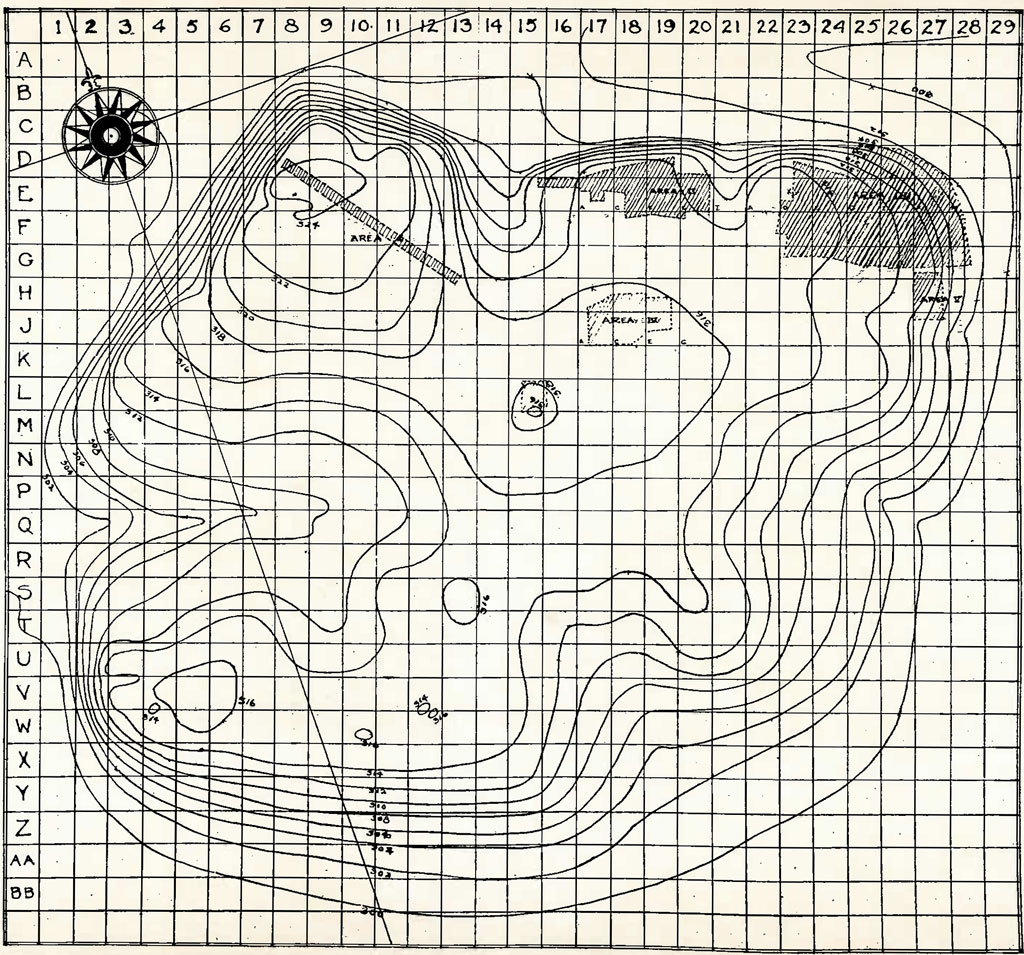
Image Number: 46200, 293645
The results of our first two seasons have amply justified our expectations. Billa and Gawra have jointly furnished us with extensive and clearly stratified sources for the study of more than four millennia of north-Mesopotamian history; for our data begin with the neolithic age and extend down to the Hellenistic period. Of the two mounds Gawra is by far the older site. The occupation of Billa did not begin until Gawra had been covered by fourteen meters of occupational debris, representing a long succession of levels. From about 3000 B.C. to the middle of the second millennium the two mounds show a virtually parallel course of development. By the end of that period Gawra had grown too tall and narrow to be of much practical value; thereafter Billa took up the burden and its occupations continued for another millennium and a half.
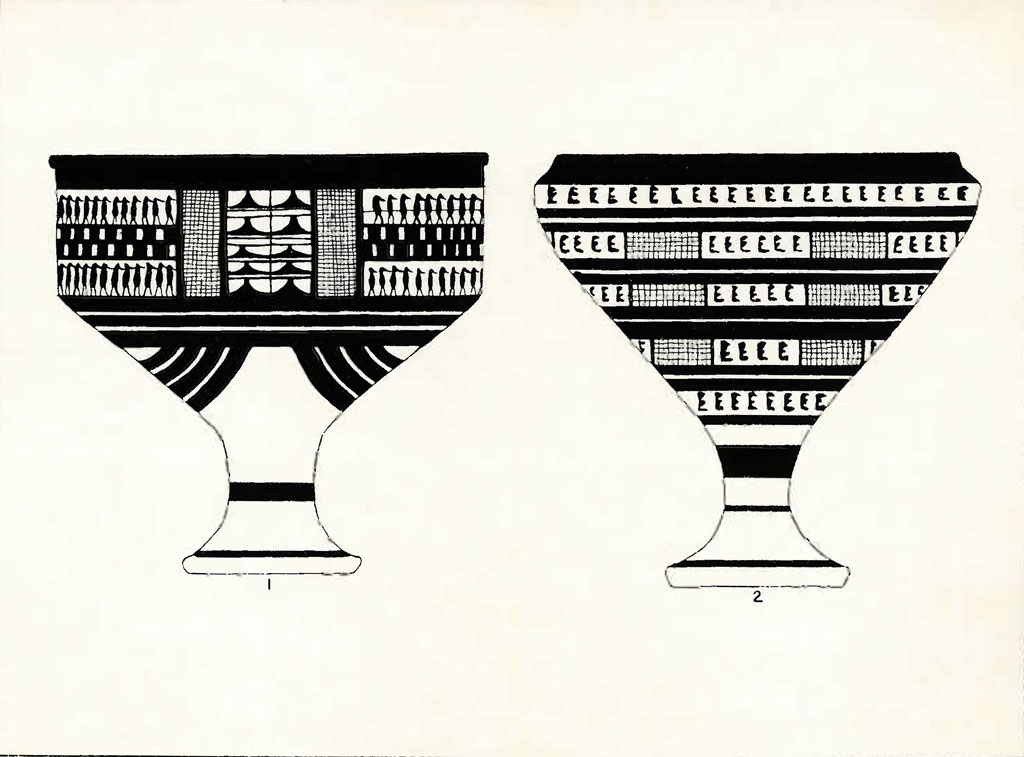
With the present article begins a series of presentations of the results that have been obtained at Billa thus far. The account is a preliminary one because a complete statement of the facts must await the total clearing of a given stratum, or number of strata. In the case of Billa such a happy state cannot be reached for a number of years. The site has an area of thirty-eight acres and it must therefore be dug in sections. Up to the conclusion of the second campaign (February, 1932) two civilizations had been studied over a larger area: the Assyrian, which is represented by strata 1 and 2, and the Hurrian, which occupies stratum 3 and its subdivisions. In the northeastern section of Billa no remains were found above the Hurrian stratum, since the Assyrian settlements were built farther inwards, away from the eastern slope. That section offered thus an excellent opportunity for following the stratification of the mound down to virgin soil. This plan was carried out as part of our work at Billa during our first season, the area being necessarily limited to the square G27 (see Plate XLVII) and parts of the adjoining squares. In our second campaign the square H27 was added to our vertical cut. In this manner material from four additional levels was obtained (strata 4-7) ; stratum 7 proved to repose directly on virgin soil. Levels 3, 4 and 5 had their substrata, but they need not be considered at present, especially since evidence obtained near the slope of a mound is not sufficient for the establishment of minute subdivisions. In addition to the finds from our seven main strata, numerous objects of the post-Assyrian age were recovered in other portions of the site. They all came from tombs that were intrusive in the Assyrian strata, and not from definite occupational layers. For this reason we feel justified in grouping all such finds under the head of the ‘post-Assyrian’ period even though they represent several cultural sequences. The late townships, which literally covered the surface of Billa with their cemeteries, all centered in the northwestern section of the mound, which is consequently a number of meters higher than the rest of the site. When this part has been dug and its stratification definitely established the tomb material will be placed in its proper order; the stratum designations a, b and so on, have been reserved for that purpose.
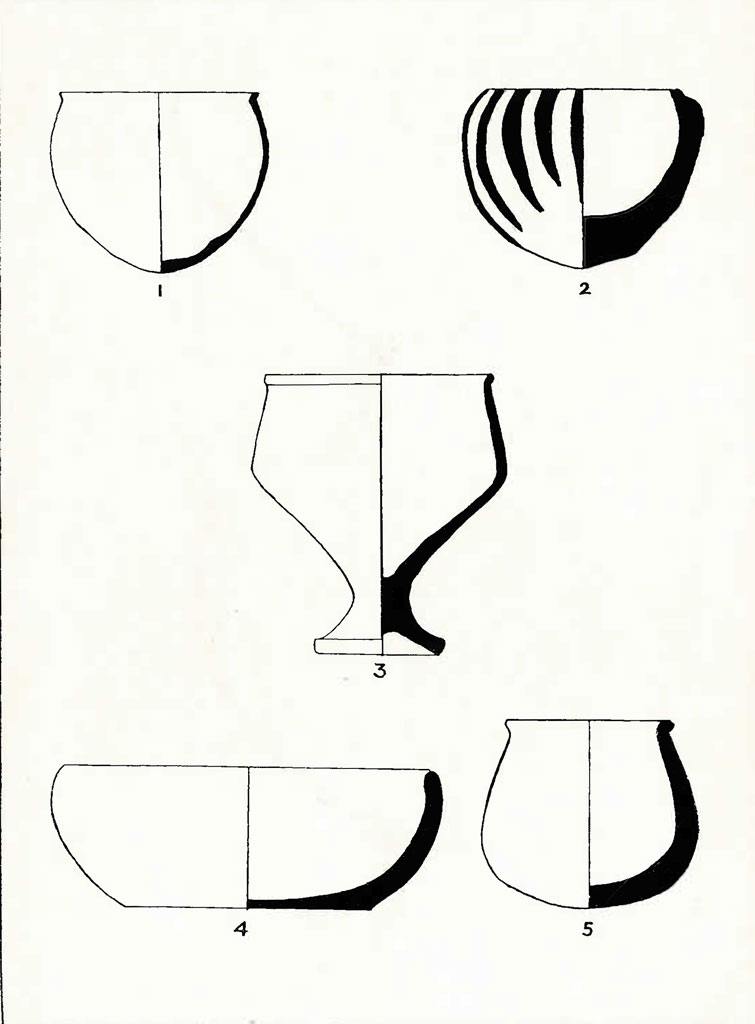
No special apology is needed for letting pottery head this series. Ceramic material is still our most trustworthy and articulate guide through ancient civilizations, especially where the epigraphical sources are incomplete, as happens to be the case with Billa. Separate accounts of the metal objects, the terra-cottas, seals, inscriptions, and the architectural data, will follow later. The pottery types published with this article are selections from a considerably larger body of available material. Lack of space has made it necessary to include only the most characteristic specimens of each period, leaving for a final publication the impressive number of intermediate types. In the arrangement of the plates it seemed most practical to present the material according to strata rather than to stress the continuity of the individual shapes. Several types had to be grouped together in some instances, since they could not each command a separate plate; but the advantage of not breaking up well-defined and homogeneous periods outweighed all other considerations.
The drawings from which the tracings for the appended plates were made are the work of several of my collaborators. Dr. C. S. Fisher, Dr. A. Saarisalo, Dr. C. Gordon, Mr. A. H. Detweiler, Mr. P. Beidler, Mr. S. P. Sherman, Mr. B. Mintzker, and Mrs. A. Saarisalo have all contributed to the corpus of Billa pottery. All the drawings selected for this publication have been carefully checked. The task of making the required tracings and reductions fell to Miss Dorothy Cross, who also contributed a number of new drawings. In addition she prepared and arranged the Hurrian motives given on Plate LXIV. Having made a special study of the development of ceramic shapes at Billa and at Gawra, which is soon to be published, she was able to contribute many valuable suggestions. I wish to express to Miss Cross my particular indebtedness for her unfailing interest in this work.
Description of the Ceramic Fabrics
a. Stratum 7 [Plates XLVIII—XLIX; LXIX]
The pottery of this period is mechanically turned as a rule, but handmade specimens are not uncommon in finer as well as in coarse pieces [Plate XLVIII, 2, 4, 5]. The shapes include simple cups and bowls; larger pots are occasionally equipped with ledge handles. The characteristic shape, however, is the chalice in which a cup or a bowl has been combined with a pedestaled base [Plates XLVIII; XLIX, 3]. In large chalices the pedestal has the shape of a column with censer-like openings. The ware is generally buff or brown, sometimes grey. The plain specimens are nearly always wet-smoothed (finished with a wash). The decorated pieces have slips in various shades of cream, more rarely in yellow and red.
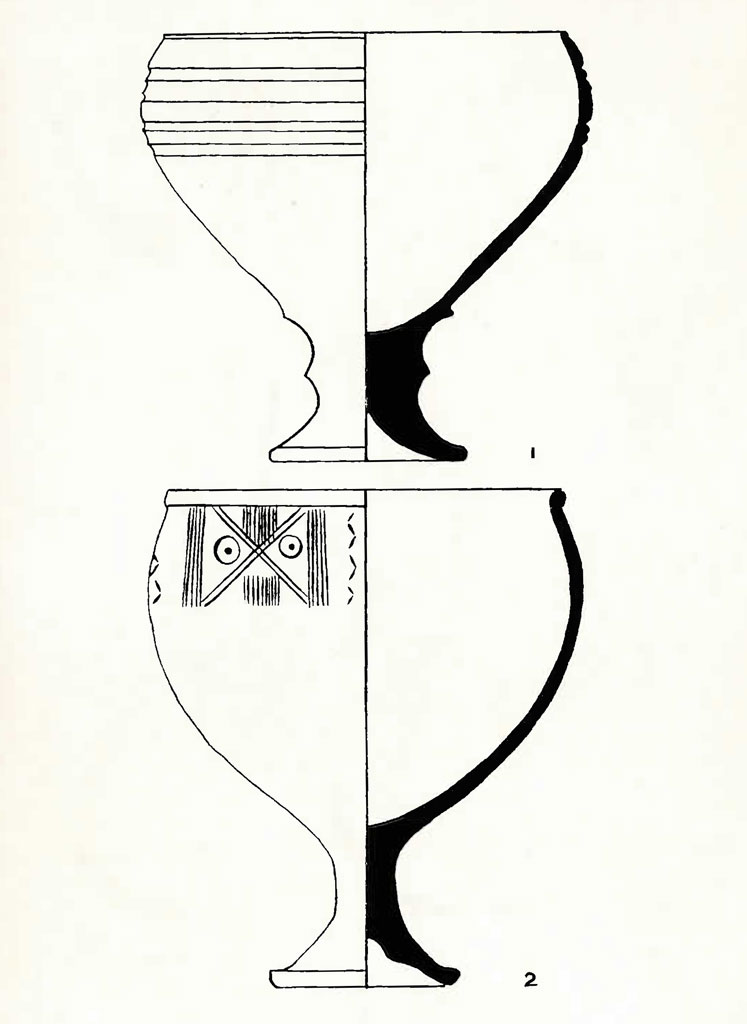
Painted ornamentation is very common, especially on the chalices. The usual color is a deep purplish-brown often shading into black; red is less prominent. Chemical analysis has shown that the pigments are merely clays with varying iron oxide content;5 the red color is due to a conversion of the total iron into ferric oxide, while the darker pigments were obtained under conditions that were favorable for the conversion of the iron into magnetic oxide, owing probably to the presence of reducing gases. The firing temperature was in the neighborhood of 1600° Fahrenheit.
The decoration is strictly monochrome. Banded and paneled (metope) arrangements are frequently employed. The designs include rows of triangles with the apex of one pointing towards the base of the next one; cross-hatched geometric figures and concentric elliptoids; herringbones and saw-tooth patterns; stylized trees and checker fields. Of the natural objects rows of birds, in silhouette, are most frequently portrayed. The disposition of the motives is tectonic, being in definite relation to the shape of the vessel (for illustrations see Plates XLVIII and LXIX).
Culturally there is an intimate relationship between this stratum and the following one. But there are also notable differences, as will be presently indicated.
b. Stratum 6 [Plates L—LIII; LXX; LXXI]
One of the distinguishing features of this period is the technical excellence of its ceramic products. In the more elaborate pieces, such as chalices, the firing temperature is raised to about 2000°, and this advance may be perhaps attributed to an increasing acquaintance on the part of our chalcolithic craftsmen with the art of handling copper. In general the clay is finely levigated. The ware is now predominantly grey, with a bluish or greenish tinge to it, otherwise buff. The older shapes are continued, but they are almost invariably more elaborate. Chalices are still very much in fashion, and the numerous variations in the forms of their pedestals [Plates L; LIII, 3] reflect the mannerisms of the new age. Graceful cups, which taper to a point at the base, are frequently encountered [Plate LII, 1-8]. A common occurrence among the funerary wares is a squat pot with sharply marked shoulder and overhanging rim [Plate LIII, 4, 6] ; curiously enough, the smaller specimens of this type were used in burials as covers for the larger ones. Ordinary vessels, such as cooking pots and storage jars, had their special lids, which display a variety of handles. The cooking pots, some of which were burnished, had lug handles; the storage jars were equipped with peg-shaped handles which had a hole near the body of the pot and a notch at the end. Many of the medium-sized cups were also supplied with handles, two or four, which were knob-shaped and vertically pierced [Plate LXX, bottom row]. The bowls [Plate LI] are often carinated; others have out-bulging bases.
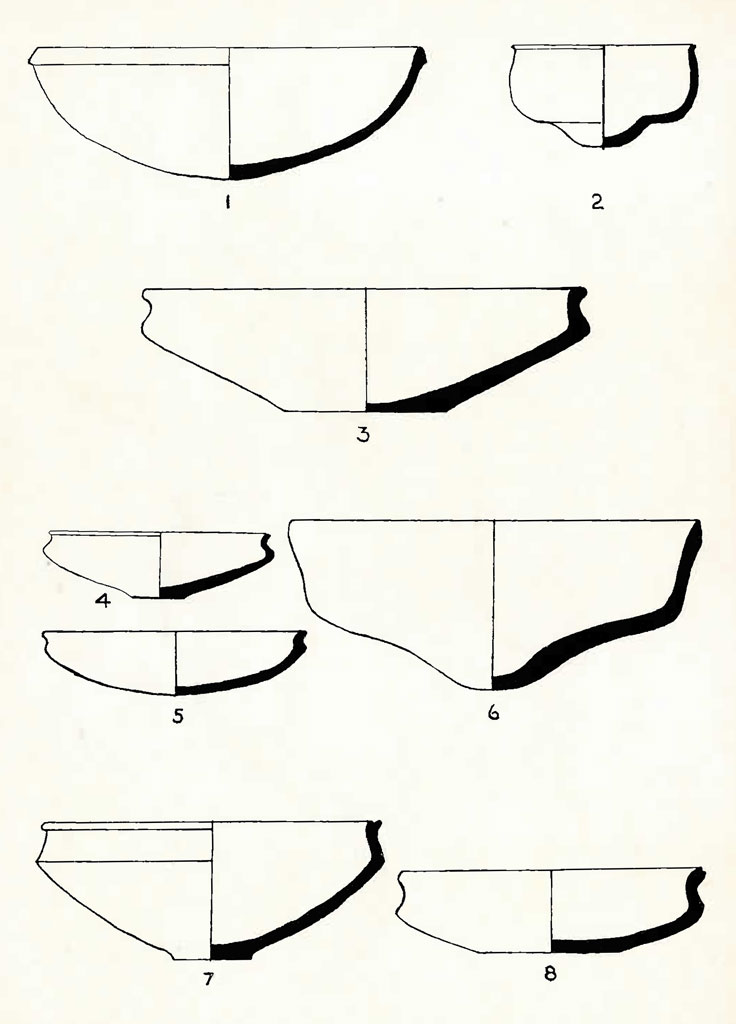
Ornamentation is frequent, though painted designs are rare; they were all but driven out by the new styles which specialized in relief and incised decoration and in molding with incision. Though exclusively geometric, the designs are appreciably varied. They include circles, plain and notched bands, zigzags, herringbones, and lattice fields, rope and knob patterns, all in a variety of combinations. Paneled arrangement is as much in vogue as it was in the preceding stratum (compare Plates LXX; LXXI). It is clear that the people of Billa 6 were in many respects the heirs of 7; in others they proved to be gifted innovators. That influences from the outside were not totally lacking will be shown in the next chapter, where the significance and the connections of the Billa pottery will be made the subject of a brief discussion. In the meantime, however, we must proceed with the ceramic survey of the remaining strata of our site.
c. Stratum 5 [Plates LIV; LV]
Stratum 6 marked the end of the chalcolithic period; with the present level begins the Copper Age proper. The preoccupation with metal, which is reflected in the abundance and the variety of copper objects, has as its inevitable corollary a diminished interest in the finer points of the potter’s craft. The technical improvements that had been introduced by an older generation are, of course, retained. The firing continues at a high temperature and the grey and buff wares which now predominate are admirably turned out. But there is little time for experimenting with new shapes; they may be tried out by individual potters, but the interest of the age is not centered on ceramics. Thus. for example, a crude attempt at evolving a jug was made in this period: the back of the neck was squeezed and drawn up, more clay was put on, and the protruding part was then pierced and fashioned into a handle. Little wonder that the creation stands quite isolated.
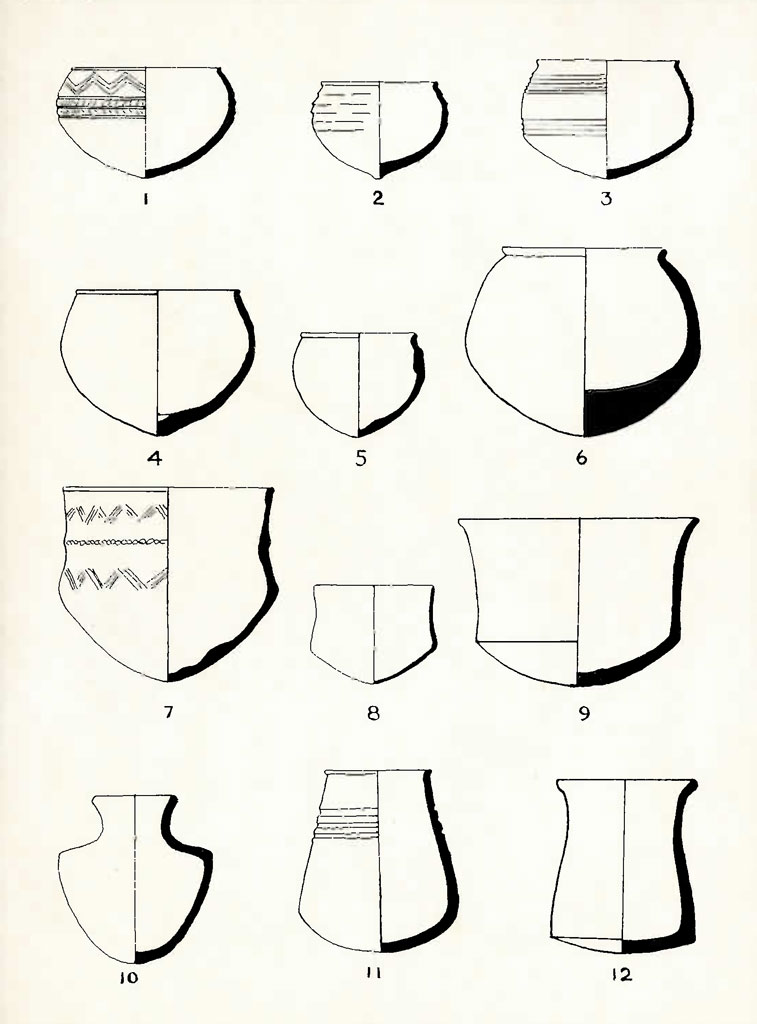
Nor has much been retained of the earlier achievements in the technique of painting and of incised work. Little of that has been carried over and cultivated. Only a very rudimentary application of what had been recently a fine art is now sanctioned or made worth while. The ornamented surface is limited to the space between the shoulder and the rim. The repertoire of designs is strikingly small. The height of elaborateness is represented by rows of triangles filled with parallel strokes and placed over a double-rope molding [Plate LV, 4]. Occasionally dots of bituminous black paint are interposed between the triangles, Plain red bands applied around the shoulder are found at times on the smaller pieces.
Washes, or slips, are almost universally employed.6 Smoothing is achieved through side-dressing or by criss-cross stroking. For the jars [Plate LV, 3, 4] chopped straw and ground sherds may be used as tempering material (degraissant). The cooking pots are furnished with ledge handles. Some of the larger jars have spouts in the form of rams’ heads.
A common shape in this period is a virtually straight cup with flat or slightly rounded base [Plate LIV, 1-3]. Most characteristic, however, is a round-sided cup with a delicate out-rolled rim [Plate LIV, 6, 8]. These products are always well baked and carefully finished. The few specimens that bear decoration have rows of oblique strokes above the shoulder, with a second row of dotted lines which slant in the opposite direction [Plate LIV, 8]. This type represents the finest wares that our stratum has to offer; of a high order mechanically, but otherwise undistinguished. In the profound cultural transformation that followed in the wake of the Copper Age, pottery is the principal sufferer, while other arts prosper.
d. Stratum 4 [Plates LVI—LIX; LXXII]
With this level we arrive at a later period, to which copper had long ceased to be a novelty. An adequate balance between the basic contemporary industries had been established, and pottery had again come into its own. There is very marked progress in shapes and renewed interest in decoration. The firing is good and the wares are often remarkably fine. Grey is still a favorite color, but buff and brown are quite popular. Slips are applied as a rule, their colors ranging from cream to light red.
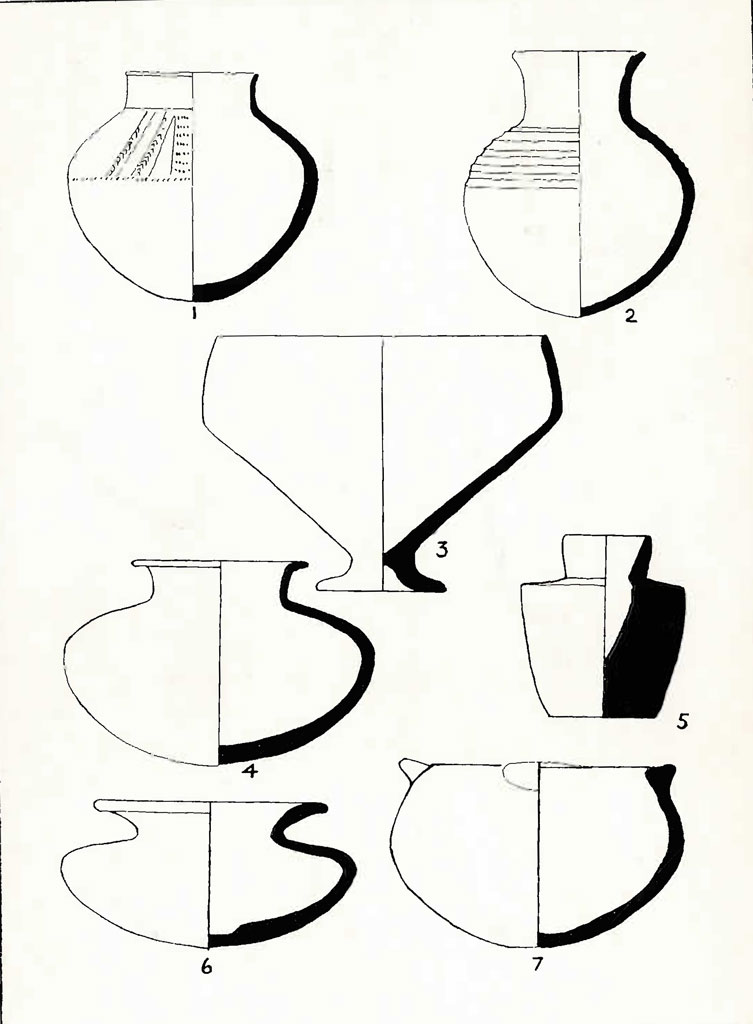
Great progress is witnessed in the manufacture of bowls [Plates LVI; LVIII, 1, 3, 5; LIX, 2, 3]. The older rounded and flat-based types are now but seldom reproduced. Most specimens of this group boast ring-bases instead, and this refinement has spread also to other classes of fabrics [Plates LVII, 2, 5, 7, 8; LIX]. The shoulders are sharply marked and the straight parts of the sides are not infrequently grooved [Plates LVI, 1; LIX, 3]. The rims are generally brimmed or lipped, and they are in many instances relieved with painted designs.
Cups too are often ribbed [Plate LVII, 1] ; usually they are straight-sided, but a graceful variation may be attained through a slight contraction in the middle [Plate LVII, 2]. Jars appear in a variety of shapes: in addition to the most prevalent type with slightly marked neck [Plate LVII, 3], we find them ovoid [Plate LIX, 1], slender-necked [Plate LVIII, 9], or narrow and elongated [Plate LVII, 5]. Pottery stands and strainers are now more abundant than they were in the lower strata. Small squat pots may have knob handles vertically pierced for suspension [Plate LVII, 4]. With the cooking pots the ledge handle has now established itself definitely as the form that was most practical for this particular purpose.
It has already been stated that ornamentation is again in vogue. After a period of neglect painted and incised designs have been revived, although this fashion fails to command the attention that it did in strata 7 and 6; the real renaissance was to be reserved for the next level. The space allowed for decoration is still confined to the parts above the shoulder; the repertoire of patterns, however, is distinctly richer and more varied than in stratum 5.
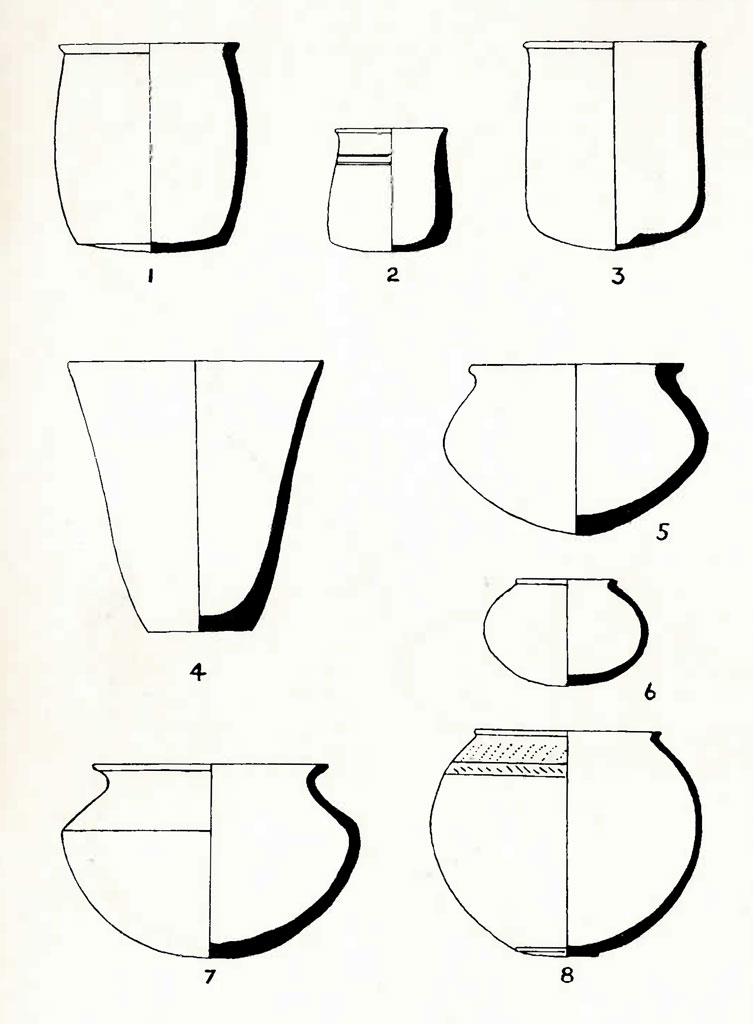
The colors are red, various shades of brown (especially bistre), and black. The scheme is no longer strictly monochrome, since red and black [Plate LVI, 9] and bistre and black [Plate LIX, 4] are occasionally combined. The typical metope arrangement of stratum 7 is all but absent, which is a valuable point of difference inasmuch as there is, in many instances, a superficial similarity in motives and a practical identity of background (cream slip for the most part). Fortunately, there is no danger of confusing the shapes of 7 and 4, as we have just seen.
The simplest painted decoration is found on the rims. It consists of parallel transverse strokes, in black or bistre, broken up by a few silhouetted triangles [Plate LIX, 3]. The fine vessel given as Plate LIX, 4 combines the most characteristic geometric patterns: bands (bistre), lattice (black), saw-tooth (black), and hatched and concentric triangles (black). Naturalistic and geometric designs are found on the cup which hears the number 5 on the same plate: a goat between a mountain (concentric triangles) and a conventionalized tree.
The same motives will be found on the sherds reproduced on our last plate [LXXII] : goats, trees, and mountains, generally in typical combinations. In addition we find a characteristic aquatic bird, which differs as markedly from the birds of stratum 7 as it will from those of 3, which we shall have to discuss very soon. In short, the painted pottery of level 4 is distinctly individual, for all that it constitutes only a small proportion of the fabrics of this period. It can be readily identified even when it happens to be accidentally intrusive in other levels. A case in point are our specimens Plate LIX, 3-4. They were recovered in a tomb (field number 61) that was stratigraphically lower than the remains of the fifth level. Nevertheless, its pottery could not be assigned to that stratum, or to 6, on account of the evidence of shapes and decoration. We were simply confronted with an unusually deep burial that happened to cut through a lower occupation layer. Hence it was no surprise to us when the bronze and silver objects from the tomb under discussion turned out to be typical of stratum 4.

The incised designs are neither as common nor as elaborate as the painted ones. Double-rope moldings [Plate LVIII, 9], combed bands [Plate LVII, 7], and hatched triangles practically exhaust the list of current motives. Rows of black-painted dots may be placed between or above the incised figures just as on the wares of 5.
In concluding this section attention should be called to the cross which represents a potter’s mark on Plate LVIII, 9. A few similar marks were found on sherds. Other details of this kind must be omitted from this summary review owing to lack of space.
Again it is necessary to reserve for a later section the interesting question as to the influences that might be held responsible for the changes and innovations which characterized the stratum just discussed. For the answer is not immediately obvious. This difficulty will not be present in connection with the level to which we shall now turn; there the explanation will not be subject to any doubt.
e. Stratum 3 [Plates LX—LXIV]
We have seen that the fabrics of the preceding period were in the main typical for that stratum. Now we ascend to a level whose wares are distinctive to a far greater degree. The principal shapes are new; they have no parallels in the earlier deposits and they are not to be carried over into the succeeding layers without extensive modifications. The same applies to the decoration; the painted designs of stratum 3 contain a series of tell-tale features which are automatically converted into obvious stratigraphic milestones. Whereas the preceding occupations never failed to yield some evidence of cultural continuity, the present stratum stands unique in the sense that the main ceramic shapes and the outstanding decoration motives are here introduced for the first time. There can be thus no doubt that the pottery of our period is the product of a civilization which had come in from the outside.
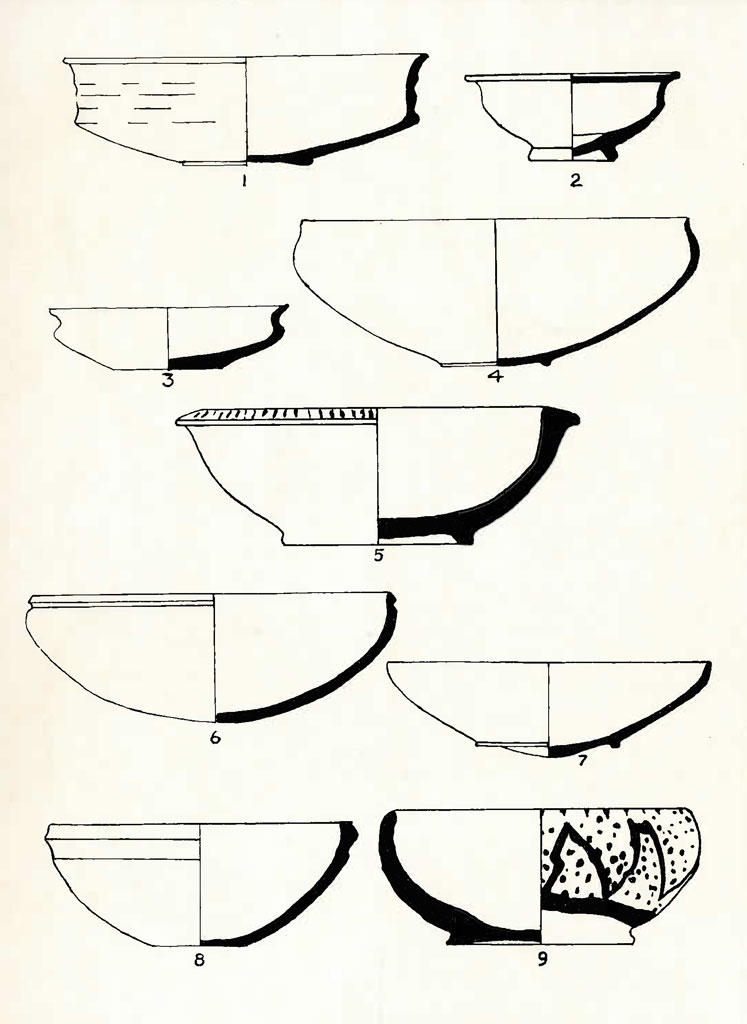
Chemically the clays are similar to those which had been used by the potters of the seventh stratum (see above). So are the pigments that could be compared.7 The materials are thus proved to be local and not imported by the incoming population. These conclusions are abundantly confirmed by other details which cannot be discussed at present.
Turning now to the shapes, we find two that are especially characteristic: a slender goblet [Plate LXI], and a small cup which may be U-shaped [Plate IX, 1], V-shaped [2, 4], or globular [6] ; in each of the above types a pronounced button-base is an almost indispensable feature. Pedestal bases are used in small bottles or jars [Plate LXII, 4, 5]. Ring-bases occur with the larger straight-sided jars [Plate LXII, 7] and lentoid pots [8] , and also with the dishes [1, 2], which are, however, just as frequently flat-based [3]. Generally speaking, the bowl is on the decline; it is either flattened into a brimmed dish or raised into a cup. Among the rarer shapes may be mentioned the amphora [Plate LXII, 6], which has in this case two spouts at the base topped by a scorpion-shaped incised design; and the censer [Plate LXIII], whose simpler prototypes are known from Gawra, but not from the earlier strata at Billa.
The usual ware is buff, with grey coming next in order. A reddish ware is witnessed occasionally in the larger vessels. The fabrics are often extraordinarily fine and thin, almost pastes. Washes are rarely substituted for slips, least of all in the painted specimens; the slips have the usual cream shades that have been noted previously, with perhaps a certain tendency to pink. The firing temperature was generally at 1600°. Nearly vitrified pieces, not uncommon in stratum 5, are now exceedingly rare. The potters were evidently careful not to allow excessive heat to interfere with the color of the painted decoration.
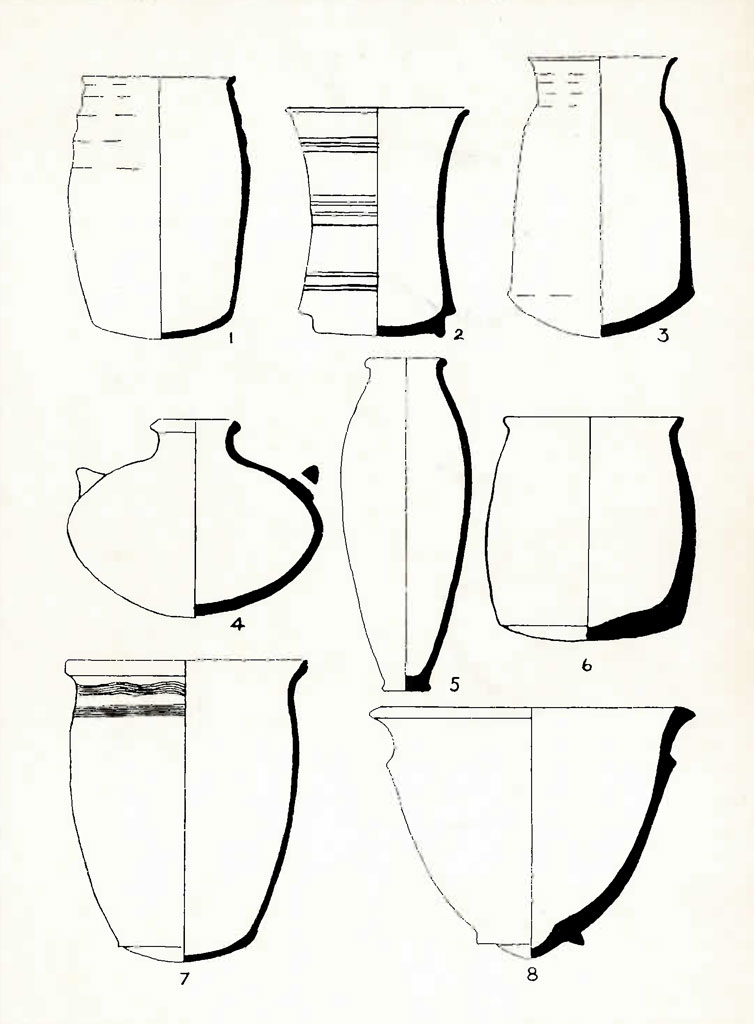
We must now survey briefly the character and the arrangement of the ornamentation. This is of the painted variety in all but a few of the larger storage jars, where the combed technique is difficult to displace. The colors are light red, dull black that rarely passes into brown, and white; the latter color is primarily harmonized with black, especially in dotted patterns where either the background or the dots may be expressed in white. It has been indicated above that the slips (or the occasional washes) are invariably in light shades.
The simplest designs consist of plain bands, usually in red, applied to the upper parts of the vessels. They are found as a rule on the decorated cups, as contrasted with the goblets on which the contemporary pot-painters exercised most of their ability and ingenuity. For it is from these latter types [Plate LXI] that our knowledge of the extensive repertoire of motives of this period is almost exclusively derived. It should be stated at the outset that there is no definite relationship between design and color: the same kind of decoration may be painted in black or in red, and although white occurs most frequently in combination with black, instances of a red-and-white scheme are not entirely lacking. To be sure, the application of either black or red as basic colors was clearly intentional, and the ultimate result can in no way be attributed to the accidents of firing; but the variations thus introduced were purely external.
A selection of the most characteristic designs of our stratum is presented on Plate LXIV. It will be seen at first glance that though geometric patterns predominate, natural representations are far from rare. Stylization is well exemplified in 2: 1, 6 (row, and number from left to right). The naturalistic motives are confined to birds [Plates LX, 3; LXIII; LXIV, 1: 1, 3-6; 2: 1, 3-4, 6], goats [Plate LXIV, 1: 2], and fish [Plate LXIV, 2: 4]. No human representations have been found on the pottery of stratum 3, and the trees that were comparatively common in the preceding layer (compare Plate LXXII) are also missing. Both periods have a marked predilection for picturing birds and goats; this, however, is as far as the parallelism goes. In essential details of technique and arrangement the painters of the two strata were very far apart. Without going here into the nicer distinctions, two outstanding differences may be pointed out. Firstly, the animals of stratum 4 are always painted in silhouette [Plate LXXII] ; in the present instance they are pictured as a rule in outline and their bodies are filled with dots, strokes, cross-hatching, and rows of semi-circles [Plate LXIV, 1; 2] ; the silhouette is comparatively rare [Plates LX, 3; LXIII; LXIV, 1: 4]. Secondly, the arrangement in stratum 4 was antithetic, or else the animals were represented as single or in a closed group; the third stratum, on the other hand, specializes in running friezes, and the idea thus conveyed is one of endless repetition of the given design.8
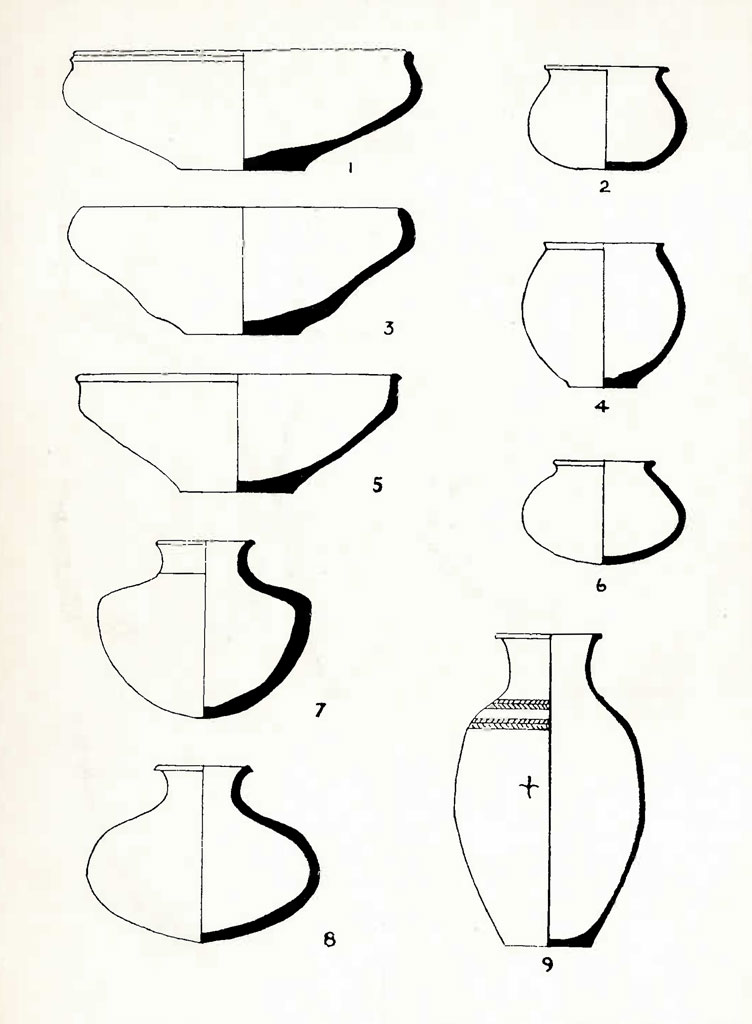
Birds furnished the favorite motive to the pot-painters of our period. They are found in a variety of sizes and of poses. Especially interesting because comparatively rare are representations of birds in flight [Plate LXIV, 1: 4], or with heads turned back [Plate LXIV, 2 : 3]. Worthy of notice is also a design which shows a bird perched on the fin of a fish [Plate LXIV, 2: 4] ; similar, though not identical, combinations are known from both Egypt and Mesopotamia at much earlier periods.9
In turning to the purely geometric motives we again notice the pre-dominance of dotted patterns [Plate LXIV, 4: 3-5; 5: 1-3, 6; 6: 1; 7: 1-2, 5-6; 8: 1]. It is difficult to determine at present how many of these designs should be credited with naturalistic prototypes. Thus Plate LXIV, 5: 5, appears to represent a conventionalized bull’s head (as at Tell Halaf), and 5: 6 points rather clearly to feathers; but other instances are ambiguous, and one might argue with an equal show of reason for either a geometric or a naturalistic origin. For many of the individual motives there is a bewildering array of variations. A detailed description would carry us too far afield, and we must, therefore, allow the plate of designs [Plate LXIV] to speak for itself. Particular attention need be given to only one group of designs, namely, spirals [8. 6], S—spirals and scrolls (row 3) ; these latter comprise the most popular geometric patterns of the age and they are represented in a notable variety of combinations (note especially 3: 1, and the guilloche, 3: 6).
In the grouping and arrangement of motives on a given vessel the contemporary painter was not tied down to many set rules. He could choose freely from the available repertoire and there was no objection to arranging naturalistic designs together with the geometric ones, though the latter alone were often deemed sufficient (compare Plate LXI). The freedom of the artist was restricted in one respect only: a motive once chosen had to be carried around the entire piece. It follows that the arrangement of the designs was strictly vertical, the individual registers being generally set off from one another by means of bands or open spaces (for an exception compare Plate LXII, 7). The goblets [Plate LXI] show three such registers as a rule, but a greater number is also possible [Plate LXI, 2]. In other fabrics the height of the specimen regulated the number of the painted rows, as is best illustrated in the case of the incense burner [Plate LXIII].
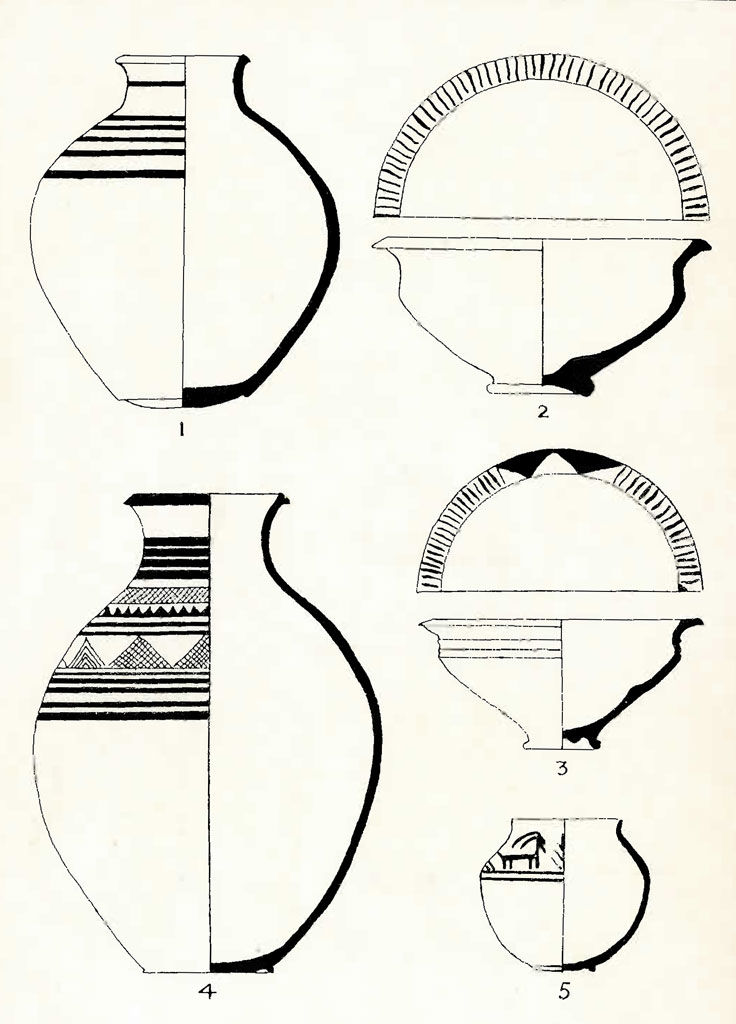
While representations of humans have not been found among the painted designs of this stratum, terra-cotta figurines of both men and animals frequently display painted decoration. Human heads attached to rims of vessels sometimes have the head and the eyes set off in red. Model bricks might show crudely incised figures of men.10 As an independent element, however, in the painted ornamentation of pottery the human figure does not seem to have been employed by the artists of Billa 3.
f. Stratum 2 [Plate LXV]
No attempt has been made thus far to identify the civilizations whose wares we have been considering beyond listing them in their proper stratigraphic sequence. For this procedure the comparative obscurity of the periods under discussion was chiefly responsible and it was deemed advisable, therefore, to postpone attempts at identification for a separate presentation in the next section. In the present instance, however, and with the remaining pottery groups, such circumspection is no longer required. For with stratum 2 we arrive at a period that proclaims its identity through scores of cuneiform tablets and inscribed bricks, not to mention other material remains of equally unmistakable origin. We are at present at the close of the second millennium, which in this case corresponds with the end of the Middle Assyrian period; the following level will represent the beginning of the first millennium, or late Assyrian. Now Assyrian pottery is reasonably well known from other sites. At Billa it is represented by well over a hundred intact specimen: and by dozens of distinct types. Obviously this is neither the time nor the place for an exhaustive presentation of the available material. Our immediate purpose will be amply served if a plate of illustrations is devoted to each of the two Assyrian levels, with only such comments as are essential to the preservation of continuity in a summary presentation
such as the present one.
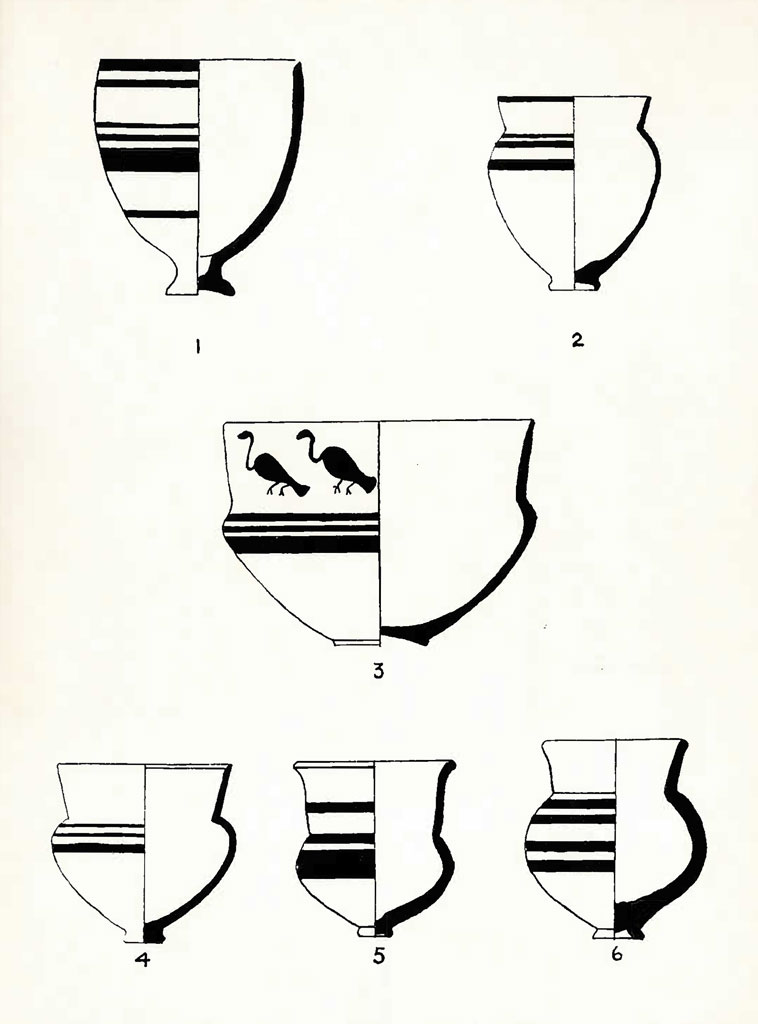
Red ware is now definitely on the ascendant threatening the long-established supremacy of the grey and buff fabrics. Washes are now the rule and slips are rare; when employed they are apt to be in deep and lustrous red.
The bowls come back into their own after a period of neglect in the preceding stratum. They are generally carinated and lipped, the rim overhanging at times [Plate LXV, 1-4]. Well-marked ring-bases are in vogue, and they are frequently emphasized by outside [Plate LXV, 2] or inside grooves.
Both the cup and the goblet are continued, but certain important details have been radically modified. This is especially noticeable with regard to bases. The self-supporting button-base has been given up in favor of the nipple type [Plate LXV, 6], which may be sharply marked [Plate LXV, 5]. Among the new shapes may be cited a pedestaled incense-holder [7] ; it foreshadows the return of the chalice in the next stratum.
What little decoration has been carried over is very rudimentary and uninspiring. Crude wavy bands come up now and then on storage jars. Red bands may be painted on the inside rims of bowls or around the necks of smaller jars. This poverty of ornamentation is but slightly compensated for by the increased use of the groove (generally at the base of the neck) and a sparing application of the ridge [Plate LXV, 1, 8]. It is clear that the Assyrian artist had little time for pottery; his energy was almost wholly absorbed by stone-cutting and modeling in terra-cotta.

g. Stratum 1 [Plate LXVI]
The distance in time between the periods represented by strata
g. Post-Assyrian Wares [Plates LXVII; LXVIII]
It was pointed out in the introductory part of this essay that the fabrics following the Assyrian occupation have no independent stratigraphical status in the portions of the mound that have been excavated so far. They are known to us from burials which encroached upon the remains of the two Assyrian strata; since .they were not recovered from normal occupation layers, all these late specimens have been grouped together as post-Assyrian, leaving a more precise division into the component historical periods for the time when the bulk of the material in question has been obtained from a normal sequence of levels.
A conspicuous feature of our late pottery is the frequent application of glazes. With the exception of storage jars, all types of fabrics were often subjected to such a treatment. Among our glazed pieces are included bowls [Plate LXVII, 1, 2], jars [Plate LXVII, 5], and amphorae [Plate LXVIII, 4], not to mention bottles and jugs. The most successful glaze has a silvery sheen and it is found primarily on bowls and dishes. The amphorae specialize in a bluish glaze, while the jars and pitchers often show a greenish shade. Many of these variations are almost certainly accidental.
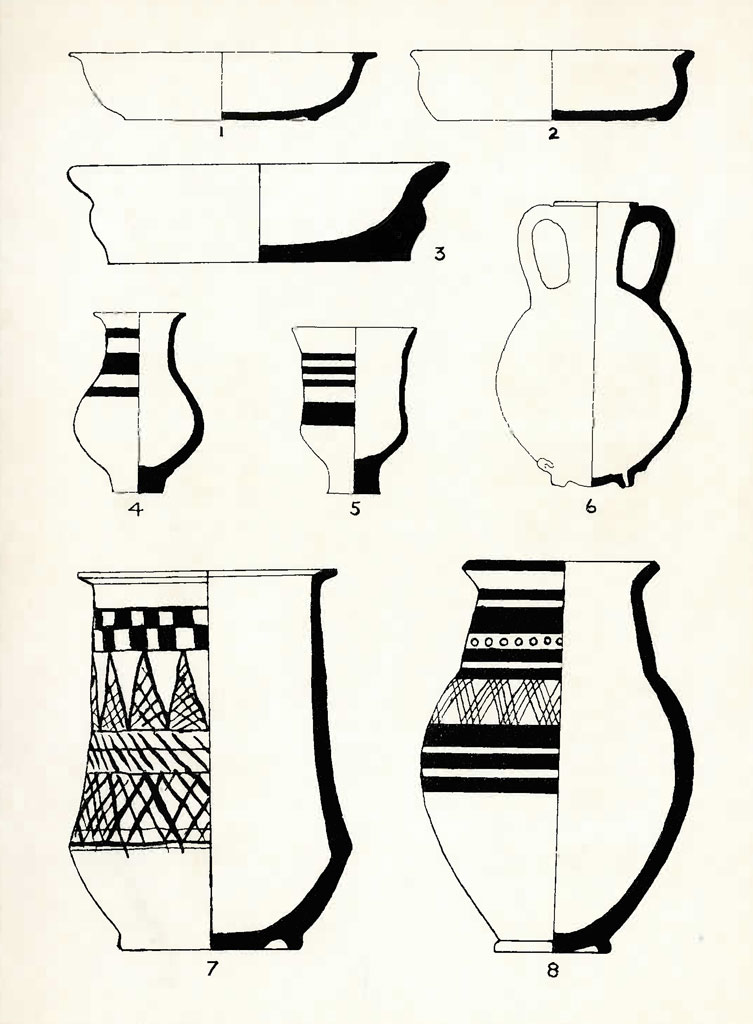
Little space need now be devoted to a characterization of the shapes. The rims of the bowls are not infrequently grooved, and the ring-base exhibits on occasions rather fanciful variations. The pilgrim flask [Plate LXVII, 3] may be noted, as well as the graceful and slender bottle [Plate LXVII, 4], which is ordinarily glazed. Pitchers [Plate LXVII, 6, 7] and jugs [Plate LXVIII, 1, 2] are now among the commonest ceramic types. The amphorae [Plate LXVIII, 3, 4] seem to have been reserved for more festive occasions. Relief and incised ornamentation is not rare now [Plate LXVIII, 3], as is well known from the Parthian pieces found on other sites. These general observations bring to a close our survey of the pottery from the seven main strata of Tell Billa, and of the later funerary ware.
The Billa Wares and Their Analogues
In the foregoing chapter our attention was centered on the typological study of the pottery from Tell Billa; the fabrics from the individual strata were discussed as to technique, shape, and decoration. No other remains of the layers in question were brought into our inquiry in order that the wares might be considered by, and allowed to speak for, themselves. All recourse to the comparative archaeological method was consequently avoided for the time being. As a net result we have obtained a series of pottery sequences, vouched for by the thoroughly reliable evidence of stratigraphy, which we may now convert into criteria for relative chronology. These sequences having once been ascertained, an investigation into consequences can no longer be avoided. For in addition to setting up the order of ceramic developments and changes at Tell Billa it is essential to find out what contacts our site may have had with the outside world. It is only with the aid of such synchronisms, based on the identification of the Billa wares with those from other regions, that the historical significance of our earlier levels can be made to appear in a proper light. From the typological stage the investigation develops into a cultural one, with the results furnished by the analysis of pottery serving as a sound foundation for more general deductions. The two lines of inquiry have been kept strictly apart, instead of being combined and synthesized, so that the certain might be clearly differentiated from what is often no more than probable. The degree of probability attaching to our cultural conclusions will largely depend, of course, on the extent and force of the available data.
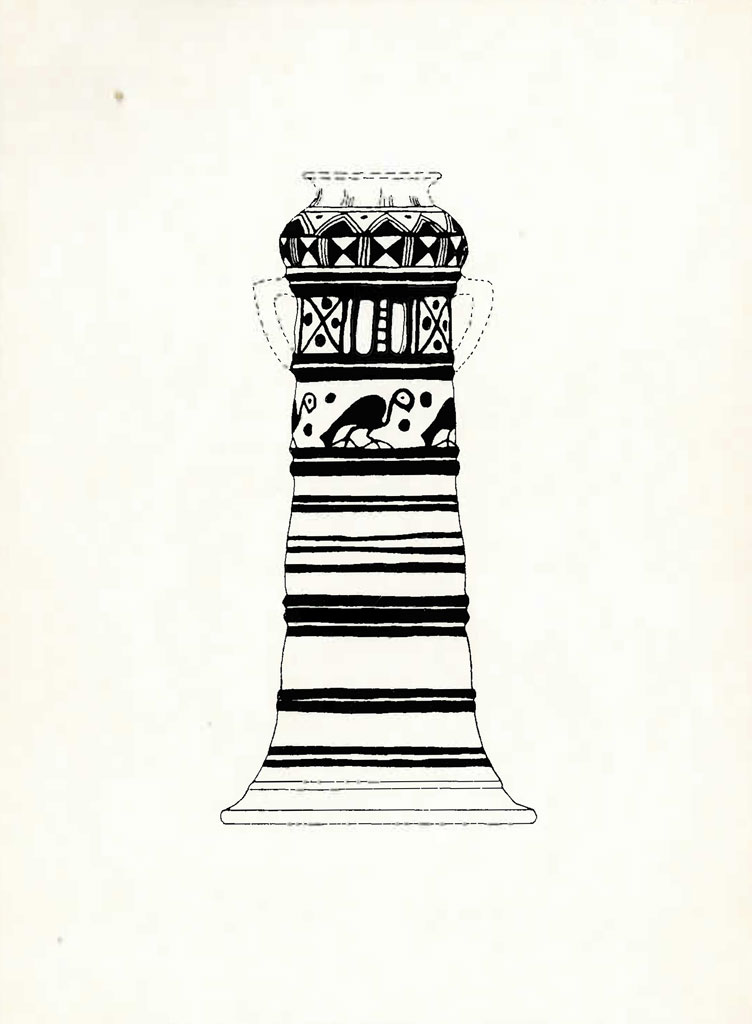
Unfortunately, we cannot go at present into as much detail as the subject warrants. Considerations of space compel us to confine our discussion to a minimum of relevant arguments. Pottery will naturally remain our basic material, and illustrations from other groups of remains will be adduced only when absolutely indispensable; for we must not anticipate unduly the forthcoming publications in this series.
To recapitulate, then, our present problem is to group the occupational layers of Tell Billa into cultural units, and to see whether the cultures in question may be correlated with any civilizations known from other sites. Again we shall start with the earliest strata and our investigation will carry us as far as the Assyrian period, which in common with the subsequent stages stands in no need of further identification.
a. Strata 7 and 6
From the survey of the ceramic products characteristic of these two strata, it was apparent that the differences between them were not so much cultural as chronological. In other words, the pottery of stratum 6 was a normal development from the wares of the preceding period. The most typical shapes had been carried over, and though considerable technical progress was evident, no proof of the presence of a new people with a totally heterogeneous civilization could be obtained from the material at hand. We are therefore entirely justified in considering the two levels as representative of successive stages of one and the same culture. Our next step will be to seek out, if possible, the analogues of Billa 7 and 6.
Happily, we shall not have very far to seek. One intact painted chalice bearing an unmistakable stamp of affinity with the fabrics of Billa 7 is known from the seventh stratum at Tepe Gawra; definitely related wares have been found also at Nineveh.11 In addition, Gawra has yielded specimens corresponding to the incised ware of Billa 6. Thus the civilization in question is witnessed in both its stages over an extensive area east of the Tigris.
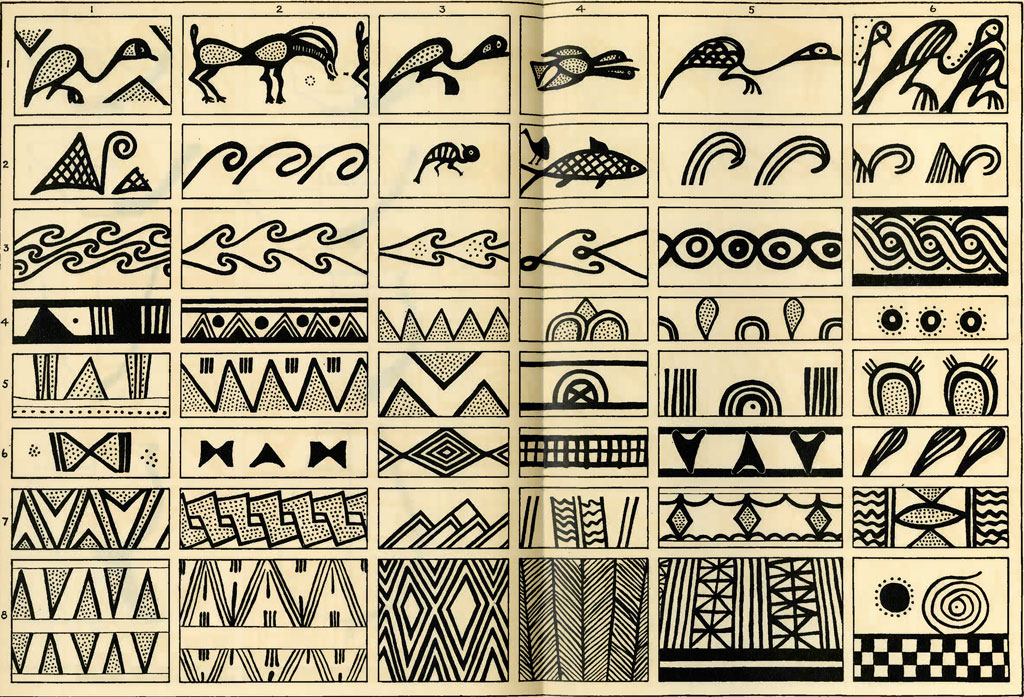
Image Number: 46210
In the south our chalice seems to have been less common. Where it occurs, however, it proves to be of inestimable chronological value, since it enables us to express the relative position of the levels under consideration in terms of south-Mesopotamian stratigraphic sequences. When we find in the lowest layer of Fara a painted fragment12 showing the same procession of birds that is so well attested at Billa 7,13 it is reasonably safe to assume that the strata under discussion were contemporaneous. Now the earliest level at Fara falls within the so-called Jemdet Nasr period,14 which precedes the early dynastic age that is ushered in so brilliantly by the First Dynasty of Ur. Tentatively, therefore, the chalice ware of the north may be synchronized with the first predynastic culture of the south (numbered in the order of antiquity).15 This identification can be raised to an absolute certainty with the aid of other remains. For among the most typical fabrics of the Jemdet Nasr period is included the squat pot with sharply marked shoulder and overhanging rim,16 and this type is well represented at Billa 6 (compare Plate LIII, 6). Moreover, similar cylinder seals are known from both regions, which share also the custom of contracted burials.
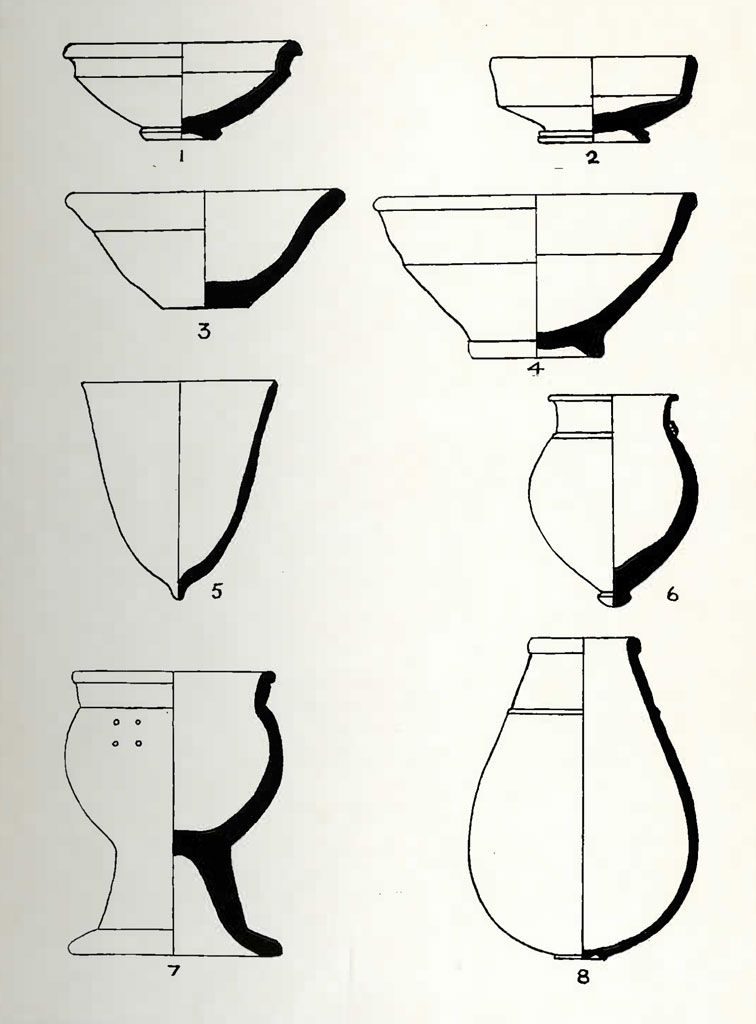
A warning is here in place against confusing contemporaneity with complete cultural identity. It is perfectly true that the north and the south have much in common in this particular period, but the differences are no less notable. The typical polychrome ware that is so justly associated with the Jemdet Nasr stage is totally absent at Billa and on the related northern sites, as are also the pictographic and semi-pictographic tablets, which now appear at Uruk,17 Kish, Jemdet Nasr, and in other southern centers. All that we are justified in claiming is correspondence in date and overlapping of certain cultural elements. It may be added that the chalice appears to have been at home in the north, while writing was as yet peculiar to the south.
It follows from the preceding remarks that we cannot expect to locate in Lower Mesopotamia the original source of the chalice ware and its accompanying fabrics. For that matter, it is difficult to discuss origins without first ascertaining the extent of distribution. Now Frankfort’s recent studies have led him to assign the type under consideration to an Anatolian-Transcaucasian source.18 I believe that he is on the right track. At all events, our pottery enjoyed its greatest vogue in the Highland Zone;19 it is well attested as far east as Hissar (east of Teheran), where Erich Schmidt found it abundantly represented in conjunction with the cup that tapers to a point at the base, precisely as at Billa 6 (compare Plate LII, 1-8).
In summing up this part of our inquiry the following conclusions may be offered: 1. The earliest civilization at Tell Billa is represented by strata 7 and 6; the most characteristic ceramic type of this period is the chalice, which is at first painted (7), later on incised (6). 2. The date of this cultural stage is established on the basis of southern analogues; it corresponds to the Jemdet Nasr period, which leads up to the early dynastic age, or Early Copper; as an absolute date may be set down the turn of the fourth millennium. 3. Culturally, the chalice period fails to furnish a complete parallel to the Jemdet Nasr stage; the two overlap without being identical in every detail. 4. The diffusion of the chalice ware and the civilization that produced it corresponds roughly with the extent of the Highland Zone; it has been traced so far from Anatolia to Central Persia, and the original source of this culture may perhaps be located within this larger area.
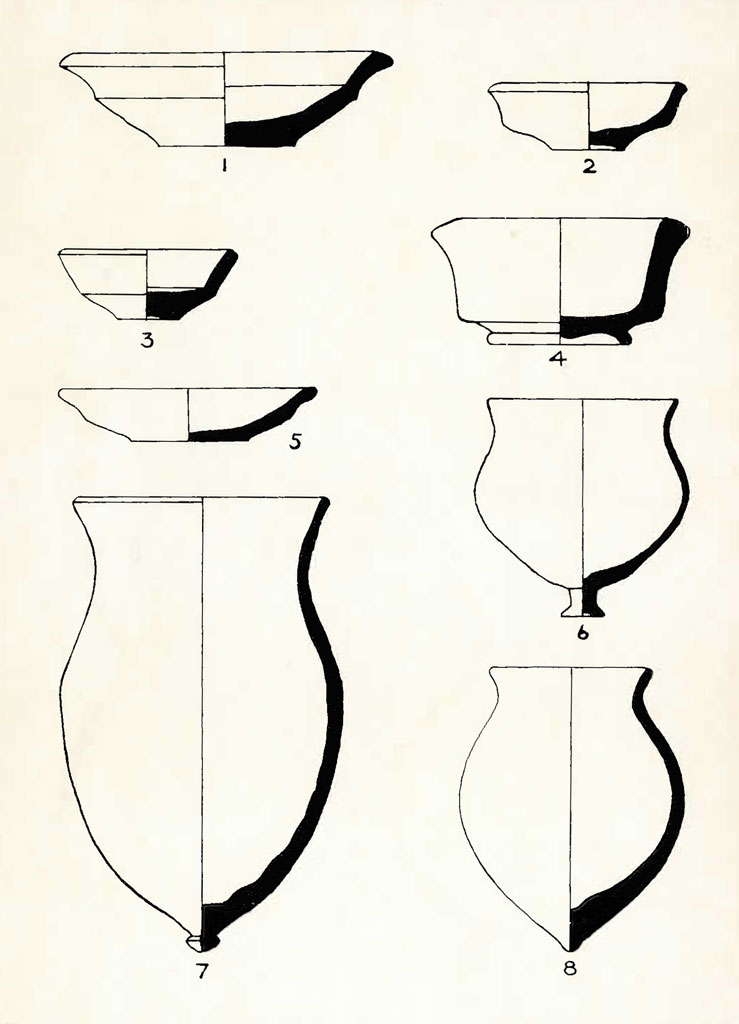
In conclusion I may be permitted to make a timely suggestion. The northern counterpart of the Jemdet Nasr period is urgently in need of some definite designation. The southern term is apt to be confusing inasmuch as it may imply not only contemporaneity but also cultural identity. If the practice of naming a given civilization after the site where its remains were first discovered is to be followed throughout, Tell Billa is certainly in line for such an honor. May we, therefore, introduce the name ‘Billa ware’ as generally indicative of the civilization which we have just been discussing? Partially related cultures are more subject to confusion than totally dissimilar ones, and strict terminological differentiation is likely to make for greater clarity.
b. Stratum 5
In the present examination we shall have comparatively clear sailing even though our main criteria are not furnished by the ceramic material. This time it will be the copper objects and cylinder seals that will yield the necessary chronological information. But before we cite the relevant details, one important synchronism must be first established. It will be remembered that the seventh level of Gawra (and also the topmost subdivision of Gawra 8) could be convincingly correlated with the two lowest strata of Billa. The correspondence was complete with regard to date and quite instructive as to material remains. On both sites the occurrence of painted and incised chalices exhibited the same order of sequence. If I seemed uncertain about setting up Gawra 7 as a thoroughgoing parallel to the Billa culture, my misgivings were primarily due to the fact that the Gawra stratum under discussion is too strongly rooted in the preceding period. In other words, the chalice folk who built the first settlements of Billa did not completely dispossess, it would seem, the contemporary inhabitants of Gawra; on the latter site the old and the imported civilizations continued for a while side by side, while Billa enjoyed a fairly homogeneous occupation. Now in the case of the succeeding settlements (Billa 5 and Gawra 6) there is no suspicion of such uneven starts; on both sites we encounter cultures that are of equal date as well as completely identical. The same people had evidently brought to a close the Billa period on both sites and built their own townships on the remains of the preceding chalcolithic strata; the Copper Age was introduced by the same group both at Billa and at Gawra. For the purpose of the present discussion the finds from the one mound have as much force as the corresponding remains from the other.
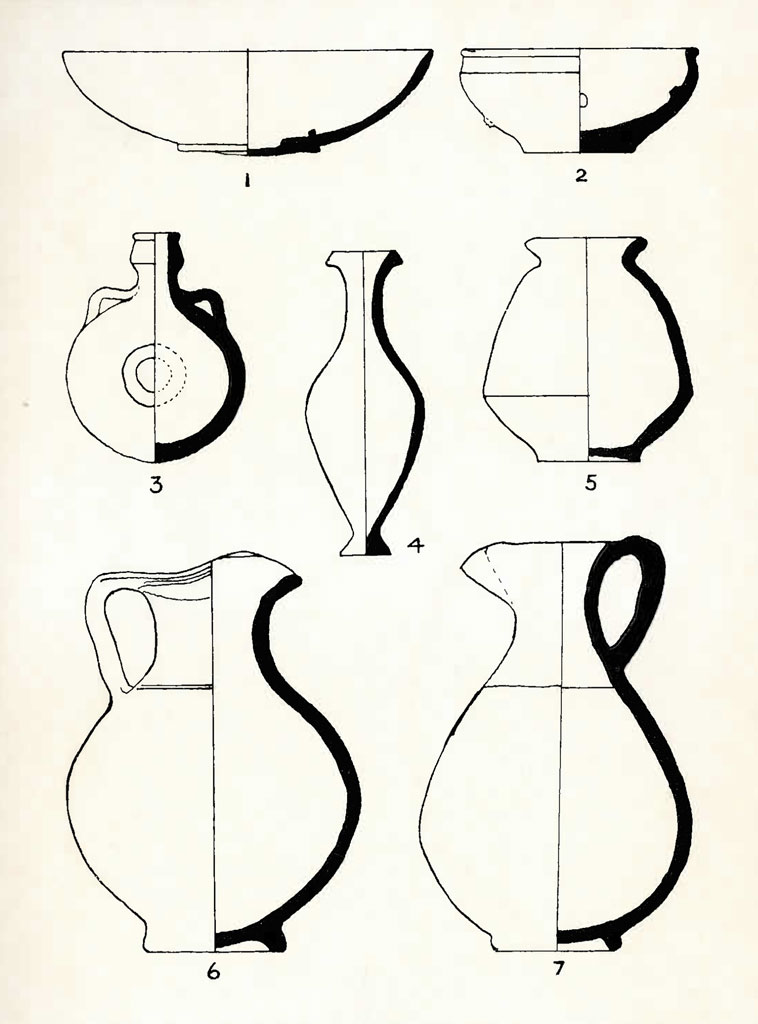
To return, then, to the copper objects at Billa 5, we are left in no doubt as to their age and outside connections. Spatulate pins20 and characteristic lance-heads21 inform us that the destroyers of the Billa culture were active in the north while the first historical dynasty of Sumer was removing the last traces of the Jemdet Nasr age in the south. Massive ridged axe-heads from Billa and Gawra align themselves as exact counterparts of a similar weapon which was recovered in an early tomb at Ashur.22 Not content with such important revelations, these metal objects have yet a further tale to tell. The spatulate pins are paralleled in Transcaucasia, the lance-heads in North Syria.23 The copper wave that struck Mesopotamia at the beginning of the third millennium evidently had its origin in submontane regions.
The cylinder seals confirm the dating based on the study of the implements and weapons of copper. Many of the fine specimens dug up at Billa 5 and Gawra 6 bear a definite relationship to the cylinders of the Royal Tombs and the First Dynasty of Ur. Others invite comparison with what we later learn to recognize as Anatolian types. The Early Copper period at Billa (and at Gawra) was thus decidedly syncretistic. It welcomed influences from the north just as did its chalcolithic predecessors; in addition it had relations with the south where the Sumerians were emerging as a powerful cultural factor.
That the wares of the fifth level of Billa and the sixth stratum of Gawra show no marked differences goes now without saying. Parallels from Ashur and the contemporary Sumerian deposits are expected and found without much trouble. The one important difference between Sumer and our northern settlements is to be observed in the choice and appearance of the building materials. The southern townships of this period are invariably constructed of plano-convex bricks. At Billa and at Gawra the foundations are of limestone, laid generally in three rows, upon which are set walls of flat-topped mud-bricks. Again we are forcibly reminded that conditions were not wholly similar in Upper and Lower Mesopotamia. These differences in physical background were reflected in an appreciable disparity of certain cultural elements and probably in the composition of the respective ethnic groups. In date, however, the agreement was fortunately complete. And it is on this fact that we wish to place just now particular emphasis. It is the pivotal point in our chronological sequence since all the other strata can be conveniently placed before or after the Early Copper level, as the case may be. The chronology of the periods that immediately precede or follow must remain, on the other hand, strictly relative until inscriptional material comes to our assistance. Whether this may be looked for in the hitherto unexcavated sections of Billa 7 and 6 is a very debatable question. But it is altogether likely that epigraphical sources will turn up in the fourth stratum, to which we must now give our attention.
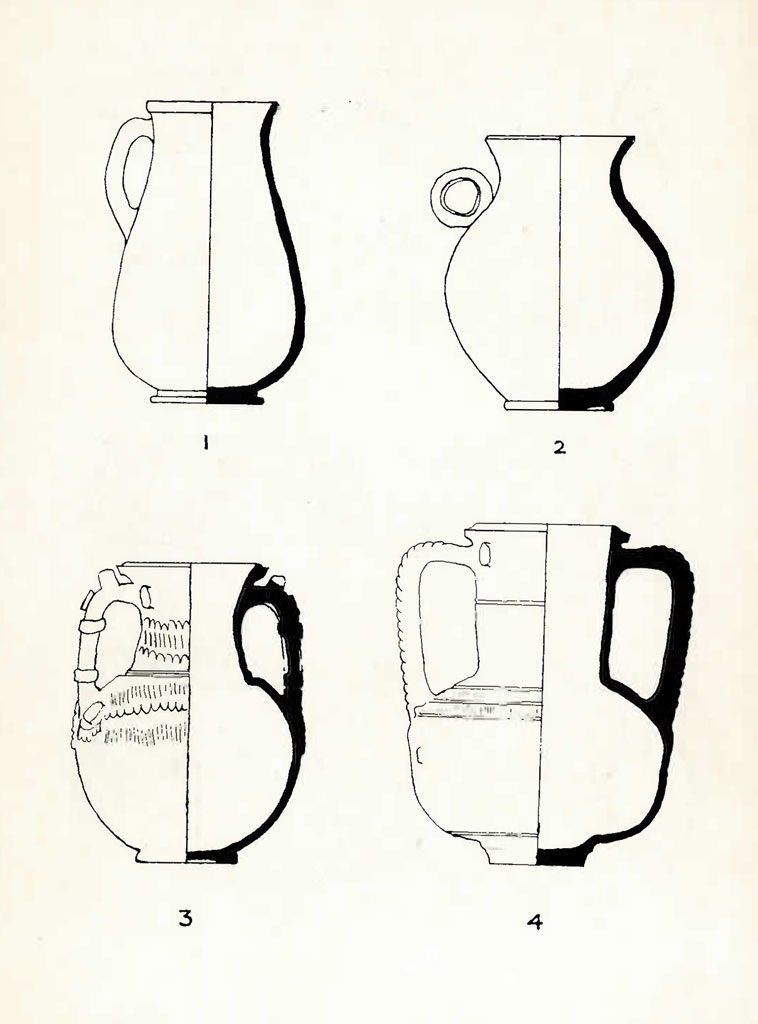
c. Stratum 4
It may well be that my optimism concerning our chances of finding inscriptions at this level was merely the expression of a pious wish. To be sure, we have at present a faintly inscribed cylinder seal from the stratum under consideration and the hope for more conclusive and articulate documents is therefore not entirely unwarranted. At all events, an unambiguous synchronism of some sort would be of great help in fixing the date of the fourth stratum of Billa. The available sources allow as yet too wide a margin. We have seen that the preceding cultural stage is to be placed early in the third millennium, that is, not later than the first quarter. It soon will be demonstrated that Billa 3 may safely claim for itself the middle of the second millennium. For the intermediate period the all too comfortable time limit of more than twelve centuries is thus made available and we may therefore be pardoned for hoping fervently for evidence that would radically narrow down the chronological possibilities. Attention has already been drawn to the fact that both 4 and 3 have their substrata, but we cannot operate with them with any degree of confidence until the excavations have gotten away from the edge of the mound. In the meantime we must be contented with what light can be gathered from the evidence of pottery, seals, and metal objects. It will be seen presently that these ordinarily reliable criteria fail to be very explicit in this case. Both the wares and the bronzes admit of more than one interpretation, some suggesting an early date while others seem to point to a later period. By an unfortunate coincidence the cylinder seals are scanty and mostly damaged, so that one is reluctant to entrust to them so important a decision as the one that is now pending.
The ambiguous character of the remains of Billa 4 for the purposes of dating will be readily appreciated when the few bronzes of this period have been considered. A contemporary burial yielded among other objects a fine crescent-shaped axe with rivets to hold the wooden shaft, a splendid dagger with mid-rib, and a long spiral-form piece recalling the ‘armlets’ of the Caucasus.24 Now all these types of bronzes come up as early as the first dynastic period, but they are also encountered over a very extensive area a thousand years later. Clearly, there are here no precise chronological indications. Perhaps another metal implement will be found more committal. Among the finds of this period, there was prominently represented a type of pin, in bronze or in silver, with ornamented head and small ring near the shank. Related specimens occur in the subsequent stratum, and a date near the turn of the third millennium is thus made plausible; however, the evidence is far from compelling.
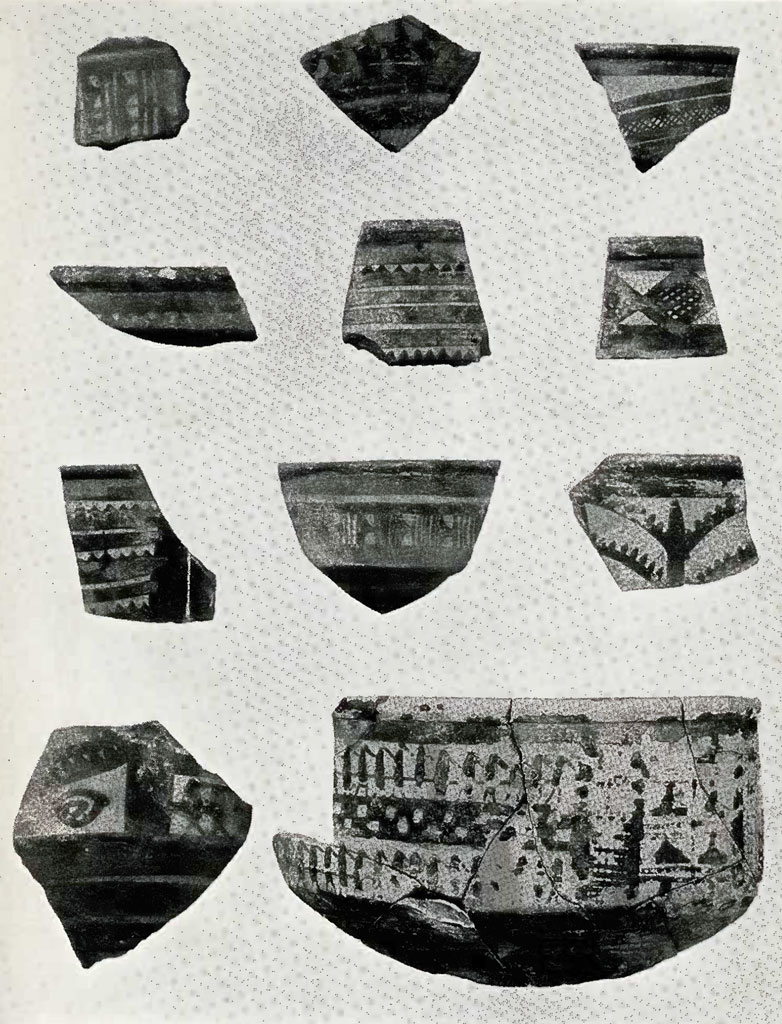
Image Number: 46203
On turning to pottery we find ourselves confronted with similar difficulties. The marked development in shapes, especially as regards the bowls, suggests a gap of several centuries between the present period and the preceding one. This is scarcely definite enough. In decoration we have noticed the prevalence of such motives as trees, silhouetted birds and quadrupeds, and triangles representing mountains (compare Plate LXXII). Little progress can be made by considering any one of these motives separately, for analogies attracted in this manner would be little better than meaningless. At best we should be asked to adduce the tree of Anau III and the not entirely dissimilar goats of so-called Susa II, with the result that the evidence of stratigraphy would be thrown overboard and Billa 4 would be dated earlier than 5. Careful observation in the field and painstaking recording has, of course, spared us such nightmare acrobatics. In point of fact it is Billa 7 to which some contacts with Anau might be reasonably credited;25 to the fourth stratum it is a far cry indeed.
A much more profitable comparison may be made with the wares of a wholly different region and period. In the southwest, especially in Palestine, the situation is distinctly promising. In that region we find duplicated the entire repertoire of motives known from Billa 4: stylized trees, whose foliage is reduced to a star-shaped figure; mountains pictured as triangles; birds and quadrupeds in silhouette. Incomparably more conclusive is the fact that all these motives are arranged into identical groups: the goats nibble at the trees, the animals stand between mountains, the parallelism extends even to the unusual combination of birds being carried by quadrupeds.26 Such complete identity of complicated designs cannot be due to mere coincidence. Can as much be said for the shapes? Not exactly. Of the same date as the decoration just described are Palestinian bowls that correspond to those of Billa 4; in both districts, too, the ring-base is prominent. But the common western jug has not established itself as yet at Billa.
What is the date of the Palestinian fabrics under discussion? Most of them fall within the period between the sixteenth and eighteenth dynasties, that is, the end of the Hyksos domination and the beginning of the New Kingdom; in other words, the second quarter of the second millennium B. c. Ordinarily such evidence would be ample to establish the date of our Billa period to everybody’s satisfaction. But the present problem has additional complications. For associated with the western pottery discussed above there are other wares, which we are constrained to classify with the ceramic products of Billa 3. On the latter site the two groups are clearly differentiated, suggesting a considerable break in time between the strata in question. In Palestine (and the neighboring districts) the same groups are telescoped.27

There is only one solution, it would seem, that is capable of accounting for such anomalies. The analogues of Billa 4 reached the eastern coast of the Mediterranean appreciably later than the time of their arrival at Billa; and conversely, though this conclusion is not inevitable, the relatives of Billa 3 appear to have made their first stop in the west. It would follow at any rate that the former group came into Palestine from the north, a region with which Billa could also communicate more or less directly. And indeed, the northern origin of the earlier Hyksos pottery is now generally admitted.28
I regret that the Hyksos had to be summoned in this connection, since the introduction of so controversial an element should not be ventured where the opportunity for adequate documentation is not to be had. Under the circumstances, however, this step could not be avoided. There is, of course, nothing inherently improbable in the assumption that some of the elements which were later to swell the ranks of the Asiatic invaders of Egypt29 should be encountered on a north-Mesopotamian site at a presumably early date. In a large migration of peoples, such as the one in which the Hyksos formed but a single stage, many lines of advance may be witnessed from a single radiating center. We know that the people of Billa 4 arrived from the north-east, since the combined evidence of the bronzes and the pottery points in that direction. For the date of that arrival we must still have recourse to guesses, though the foregoing inquiry has helped to narrow down the margin. Provisionally, I am inclined to see in the inhabitants of our stratum the forerunners of those Anatolians that were presently to sack Babylon30 and put an end to the dynasty made famous by Hammurabi. Future excavations at Tell Billa will show how much truth there may be in this theory.
d. Stratum 3
Since both the identity and the date of this period can be established without any great effort, our discussion may begin with the data that will help us settle these two important points. The excavations at Nuzi, near Kirkuk, have furnished Assyriologists with several thousand cuneiform documents from which it has been learned that the population of the district was a branch of the extensive Hurrian group.31 The country of Arrapha, in which ancient Nuzi was situated, was an eastern dependency of the kingdom of Mitanni at the time of Saushshatar, the founder of a well-known Mitanni dynasty. Saushshatar being a contemporary of Tuthmosis III, the period at which Nuzi flourished is thus placed at about 1500 B. C.
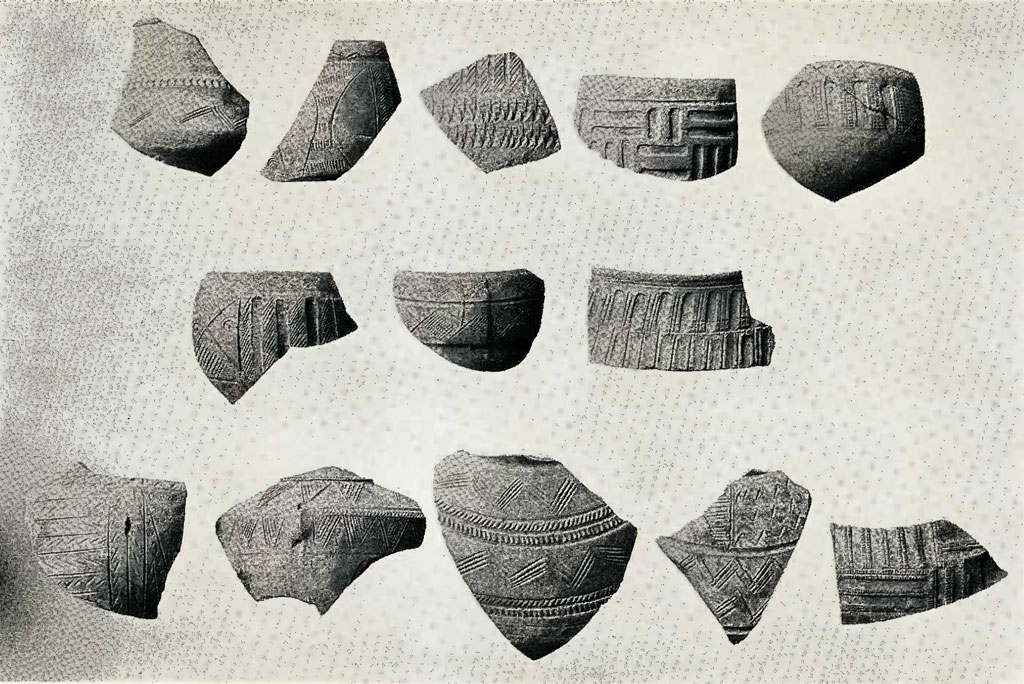
Image Number: 46208
Now the dominant ceramic shape at Nuzi was the slender goblet, or wine-cup, which is so well attested in the third stratum of Billa [Plate LXI]. The Nuzian specimens happen to be rarely decorated; but when ornamentation was applied, the painters made use of the same spirals and aquatic birds that are known from Billa in such abundance. The third stratum is stamped thereby as unmistakably Hurrian. The popularity of the painted fabrics on our site as contrasted with the mainly undecorated wares of its eastern congener is doubtless attributable to a slight disparity in age. Billa was apparently settled by the Hurrians several generations earlier than Nuzi, the course of these people being certainly from west to east. During the few intervening decades the painting of pottery was gradually given up, while the study of Assyrian was making rapid progress. This would give us an adequate explanation for the presence of numerous inscribed documents at Nuzi as against the comparative illiteracy of Billa 3. To a limited degree, however, writing was employed on bur site as well; the stratum has produced a cylinder seal with two typically Hurrian names.
The main facts on the subject being so clear and plain, the above remarks could have been perhaps dispensed with if it were not for the mistaken notion, current in some quarters, that the level under discussion should be assigned to the ninth century B. C. This erroneous interpretation of the ceramic evidence can be traced to a phrase in one of my field reports; it was stated there that the third stratum was found directly under the remains of the period of Ashurnasirpal (level 1 at this particular corner of the mound).32 M. Dussaud took this statement to mean that the underlying stratum immediately preceded the Assyrian one in date; the painted fabrics of Billa 3 he would date not earlier than the beginning of the ninth century.33 It is not necessary to go into great detail in order to refute the arguments of the learned Conservateur of the Louvre. The synchronism with Nuzi does that most effectively. It may be added that in other sections of Billa the second stratum goes back to the period of Shalmaneser I. The painted pottery which immediately precedes would be thus not earlier than the fourteenth century, on the assumption that the strata followed each, other at this point without any break in time. That this was not so has already been demonstrated. If additional proof were required, I might mention typical Anatolian terra-cotta figurines, which have been found in close association with the fabrics of Billa 3; some are of the Teshup type, while others represent men clad in short tunics and holding kids or lambs. There is, therefore, no justification whatsoever for attributing the pottery of our third stratum to the Assyrians as M. Dussaud has proposed to do.
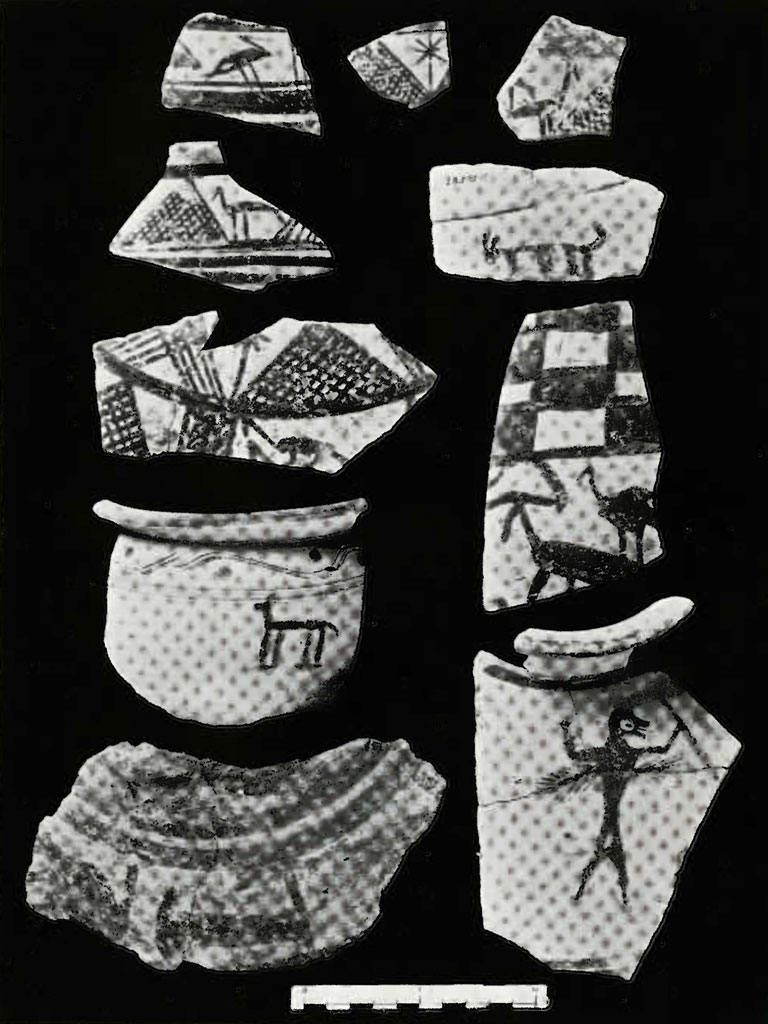
Image Number: 46207
The cylinder seals bear out our contention, naturally enough. They are all of the type that M. Contenau terms Syro-Hittite, and they correspond admirably to the seal impressions found on the Nuzi tablets. Moreover, the glyptic material reminds us that the affinities of the Hurrians were with the West, a conclusion that is in complete conformity with the linguistic evidence. In fact, our Hurrians formed the bridge that linked Mesopotamia and Syria with western Asia Minor and the Ægean basin. This is an inevitable deduction from the available ceramic evidence. We have stressed the differences between the pottery of the fourth and the third strata of Billa in the preceding chapter, and further characterization of the Hurrian fabrics (compare especially Plate LXIV) is not essential in the present discussion. The ornamentation of the wares of the third stratum is paralleled in its most important features in Palestine, Syria, Cyprus, and the lands of the Hittites. This is particularly true of the birds and spirals; the best analogies to the Billa dolphins come from Ægean centers where closely related animal figurines are also found. The dotted designs are prevalent throughout. Together with this painted decoration we notice the spread of the button-base. There are certainly frequent local variations in shapes; it is instructive, therefore, to place side by side the censer from Billa [Plate LXIII] and a similar cult object from Beisan.34 When it came to objects having a religious significance the conservative tendencies that are operative in such cases brought about the retention of the common original types, whether it was in Palestine or in Upper Mesopotamia. More detailed comparisons must be reserved for a future publication.
e. Conclusions
To conclude this discussion of the five lowest levels at Billa, it is evident that none of them represented a people that was indigenous to this section of the country; the same goes for the rest of Mesopotamia as can be seen from the evidence of such early southern sites as Ur and Warka, where analogues of Billa are either totally absent or else witnessed for only brief periods. That the first settlers of Billa (stratum 7) were merely invaders can be demonstrated with the aid of the material from Tepe Gawra; there the chalice folk are definitely recognized as intruders, the event having taken place at a time after Gawra had accumulated as many as fourteen meters of debris and had passed through a long series of earlier and totally dissimilar periods. From Billa 6 onwards we note a succession of further invasions. All of these arrivals appear to come from the north or northeast. Only in the case of Billa 5 we observe a simultaneous influx of cultural stimuli from the south, where the Sumerians are known to have held sway at the time.
The cultural associations of the Assyrians and their successors at Billa are too well known to require any discussion in this connection.
Our finds may be given the form of a final summary in the following chronological table:
Billa 7-6 – Corresponding with the Jemdet Nasr, or First Predynastic Period of the South: 3200-2900
Billa 5 — Early Dynastic Period: 2900-2700
Billa 4 — Anatolian Period: about 1900 ff
Billa 3 — Hurrian Period: 1600-1400
Billa 2 — Middle Assyrian: 1300— 800
Billa 1 — Late Assyrian: 800— 700
The dates suggested are, of course, approximate and tentative. The post-Assyrian occupations have not been included in this scheme.35
Index of the Pottery in the Plates
The area (compare contour map, Plate LXVII) is indicated following a brief description of each piece. In the case of objects now in the University Museum the catalogue number has been appended.
PLATE
- Contour Map.
- Startum 7. Chalices.
- Chalice-buff ware, cream slip, deep brown painted design. G27. 31-51-593.
- Chalice-buff ware, cream slip, bistre painted design. G27.
- Stratum 7. Miscellaneous.
- Cup-buff ware, greyish buff slip. H27.
- Cup-grey ware, red slip, brown painted lines, hand-made. 1127. 32-20-520.
- Chalice-buff ware, buff slip, deep brown painted design. G27.
- Bowl-brownish grey ware, hand-made. G27.
- Cup-brown ware, hand-made. F27.
- Stratum 6. Chalices.
- Chalice-greenish grey ware, greenish grey wash. G27.
- Chalice-grey ware, grey wash. G27.
- Stratum 6. Bowls and Saucers.
- Bowl-buff ware, buff slip. G26.
- Bowl-green ware, green wash. G27.
- Bowl-grey ware, grey wash. H27.
- Saucer-light green ware, green wash. G26.
- Saucer-light green ware, green wash. G27.
- Bowl-greenish grey ware, greenish grey wash. H27.
- Bowl-greenish grey ware, greenish grey wash. H27. 32-20-489.
- Saucer-yellow green ware, yellow green wash. G27.
- Stratum 6. Cups and Jar.
- Cup-grey ware, incised. 1127.
- Cup-greenish grey ware, greenish grey wash. G27.
- Cup-bluish grey ware. H27.
- Cup-light bluish grey ware. H27.
- Cup-greenish grey ware, greenish grey wash. G27. 31-51-482.
- Cup-greenish grey ware, greenish grey wash. G27. 31-51-480
- Cup-drab ware, buff wash, incised. G27. 31-51-590.
- Cup-grey ware, grey wash. G27. 31-51-440.
- Cup-buff ware, buff wash. H27. 32-20-495.
- Jar-greenish grey ware, greenish grey wash. H27.
- Cup-light green ware, green wash. G27. 31-51-486.
- Cup-grey ware. 1127.
- Stratum 6. Jars and Chalice.
- Jar-dark grey ware, grey wash, incised. G26.
- Jar-drab ware, grey wash. G27.
- Chalice-light bluish grey ware, grey wash. H27.
- Squat pot-buff ware, yellowish cream slip. Tomb 72. 31-51-165.
- Model jar-buff ware, hand-made. H27. 32-20-499.
- Squat pot-drab ware, greenish grey slip. Tomb 70. 31-51-159.
- Pot-brown ware, brown wash. Tomb 71. 31-51-161.
- Stratum 5. Cups and Pots.
- Cup-greenish grey ware. H27. 32-20-491.
- Cup-yellow ware, yellow wash. G27.
- Cup-light green ware, light green slip. G27.
- Cup-light green ware, light green slip. F27.
- Pot-buff ware, buff wash. H27. 32-20-498.
- Pot-green ware, green wash.
- F27. Jar-bluish grey ware, bluish grey wash. H27.
- Pot-grey ware, grey slip. F26.
- Stratum 5. Jars
- Pot-light green ware, light green wash. F26.
- Pot-pale yellowish buff ware, cream wash. F26.
- Storage jar-light green ware, light green wash. F26.
- Jar-greyish buff ware, buff wash. F26.
- Stratum 4. Bowls and Saucers.
- Bowl-light greenish ware, green slip. F26.
- Bowl-grey ware, grey wash, brown painted design on rim. F24.
- Saucer-buff ware, buff wash. F26.
- Bowl-light greenish ware, light greenish slip. E26.
- Bowl-greenish grey ware, greenish gray wash, brownpainted lines on top of rim. F24.
- Bowl-light green ware, green wash. F26.
- Bowl-buff ware, pinkish wash. G27.
- Bowl-greenish grey ware, greenish grey wash. F27.
- Saucer-greenish grey ware, greenish grey wash, red and black painted design. F24. 32-20-460.
- Stratum 4. Cups and Jars
- Cup-yellowish ware, cream slip. F26.
- Cup-grey ware, grey wash. F26.
- Jar-buff ware, buff wash. E26. 31-51-379.
- Pot-light greenish ware, light greenish slip. F27.
- Storage jar-grey ware, grey wash. E25.
- Cup-greenish grey ware, greenish grey wash. H27.
- Jar-light green ware, green wash. D26.
- Pot-buff ware, pinkish cream wash. G27.
- Stratum 4. Tomb 42.
- Bowl-greenish grey ware, greenish grey wash. 31-51-116.
- Pot-greenish grey ware, greenish grey wash.
- Bowl-buff ware, buff wash.
- Pot-buff ware, red and yellow slip. 31-51-119.
- Bowl-greenish grey ware, greenish grey wash. 31-51-117.
- Pot-greenish grey ware, greenish grey slip. 31-51-121.
- Jar-greenish grey ware, partly burnished.
- Jar-greenish grey ware, greenish grey slip. 31-51-124.
- Jar-buff ware, cream slip, vertically burnished. 31-51-125.
- Stratum 4. Tombs 48 and 61.
- Jar-buff ware, buff wash, red painted bands. Tomb 61.
- Bowl-buff ware, cream slip, red painted strokes aroundrim. Tomb 48. 31-51-136.
- Bowl-buff ware, buff wash, brown painted design. Tomb 61. 31-51-149.
- Jar-buff ware, cream slip, black and bistre painted design. Tomb 61. 31-51-151.
- Pot-buff ware, cream slip, black painted design. Tomb 48.
- Stratum 2. Miscellaneous.
- Bowl-red ware. S7.
- Bowl-greenish grey ware. T8.
- Bowl-greenish grey ware. S8.
- Bowl-greenish grey ware. U7.
- Cup-light greenish grey ware.
- Jar-greenish grey ware. U6.
- Pedestal incense holder – greenish gray ware, greenish cream slip. E25. 31-51-185.
- Storage jar-buff ware, greenish grey wash. U7.
- Stratum 1. Miscellaneous.
- Bowl-greyish buff ware. T13. 32-20-225.
- Saucer-buff ware. R11. 32-20-223.
- Saucer-grey ware. Q10.
- Bowl-grey ware, grey wash. S13.
- Saucer-buff ware, greyish wash. V7.
- Jar-reddish buff ware, greyish wash. V7.
- Jar-greenish grey ware. W12.
- Jar-light red ware, light red wash. E23.
- Post-Assyrian. Miscellaneous.
- Bowl-silver glaze. S11.
- Bowl-light green glaze. U6. Tomb 319. 32-20-189.
- Pilgrim flask-greenish grey ware, greenish grey wash. S13. Tomb 156. 32-20-50.
- Bottle-buff ware, red slip. S11. Tomb 235.
- Jar-bluish green glaze. T12. Tomb 164. 32-20-56.
- Pitcher-buff ware, traces of black paint on shoulder and neck. R13. Tomb 247.
- Pitcher-reddish buff ware, brown paint on upper part. T11. Tomb 258. 32-20-127.
- Post-Assyrian. Amphorae and Jugs.
- Jug-buff ware, red slip on upper part. S13. Tomb 277.
- Jug-buff ware, buff wash. R11. Tomb 263.
- Amphora-buff ware, reddish buff wash, incised and ap-pliqued. T11. Tomb 208.
- Amphora-bluish green glaze. R13. 32-20-229.
- Stratum 7. Painted Potsherds.
- Stratum 6. Incised Potsherds.
- Stratum 6. Incised Potsherds.
- Stratum 4. Painted Potsherds.
Results of Tests on Selected Pottery Specimens
The following tables are taken from a report submitted by Mr. R. M. Berry, of the firm of Smith, Rudy & Company, Philadelphia, analytical chemists. Specimens 1-2 are from the seventh stratum, 3-4 from the third stratum of Billa. 1 and 3 contained red decorations, while 2 and 4 were painted in black. The samples were tested for pigment, body clay, and fusion points.
Sample No. 1
| Tested for | Pigment – % | Body Clay – % |
|---|---|---|
| Water of Combination | None | 3.58 |
| Silica | 47.80 | 44.00 |
| Iron Oxide (Fe3O3) Ferric Oxide | 7.00 | 5.00 |
| Magnetic Oxide (Fe3O4) | None | None |
| Alumina (Al2O3) | 10.00 | 11.95 |
| Titanium Oxide (TiO2) | 1.00 | .65 |
| Lime (CaO) | 13.34 | 18.12 |
| Magnesia (MgO) | 4.32 | 4.42 |
| Alkalies as Potassium Oxide (K2O) | 16.54 (By Difference) | 2.92 (By Difference) |
| Carbon Di-Oxide (CO2) | None (By Difference) | 9.36 |
| Sulpher Tri-Oxide (SO3) | None | None |
Fusion Tests
| Initial Deformation Point | Not Done | 2124° Fahrenheit |
| Fusing Point | Not Done | 2165° Fahrenheit |
Sample No. 2
| Tested for | Pigment – % | Body Clay – % |
|---|---|---|
| Water of Combination | None | 1.25 |
| Silica | 47.80 | 48.44 |
| Iron Oxide (Fe3O3) Ferric Oxide | None | 8.57 |
| Magnetic Oxide (Fe3O4) | 11.77 | None |
| Alumina (Al2O3) | 16.03 | 15.53 |
| Titanium Oxide (TiO2) | .50/td> | .50 |
| Lime (CaO) | 13.65 | 15.17 |
| Magnesia (MgO) | 5.24 | 7.70 |
| Alkalies as Potassium Oxide (K2O) | 5.01 (By Difference) | 1.65 (By Difference) |
| Carbon Di-Oxide (CO2) | None | 1.19 |
| Sulpher Tri-Oxide (SO3) | None | None |
Fusion Tests
| Initial Deformation Point | Not Done | 2124° Fahrenheit |
| Fusing Point | Not Done | 2165° Fahrenheit |
Sample No. 3
| Tested for | Pigment – % | Body Clay – % |
|---|---|---|
| Water of Combination | None | 2.77 |
| Silica | 14.20 | 49.32 |
| Iron Oxide (Fe3O3) Ferric Oxide | 7.50 | 7.43 |
| Magnetic Oxide (Fe3O4) | None | None |
| Alumina (Al2O3) | 39.50 | 14.42 |
| Titanium Oxide (TiO2) | 1.00 | .75 |
| Lime (CaO) | 10.66 | 13.20 |
| Magnesia (MgO) | 7.70 | 5.36 |
| Alkalies as Potassium Oxide (K2O) | 19.44 (By Difference) | 4.84 (By Difference) |
| Carbon Di-Oxide (CO2) | None | 1.91 |
| Sulpher Tri-Oxide (SO3) | None | None |
Fusion Tests
| Initial Deformation Point | Not Done | 2124° Fahrenheit |
| Fusing Point | Not Done | 2165° Fahrenheit |
Sample No. 4
| Tested for | Pigment – % | Body Clay – % |
|---|---|---|
| Water of Combination | None | 1.60 |
| Silica | 50.24 | 45.48 |
| Iron Oxide (Fe3O3) Ferric Oxide | None | 7.57 |
| Magnetic Oxide (Fe3O4) | 7.50 | None |
| Alumina (Al2O3) | 20.10 | 14.58 |
| Titanium Oxide (TiO2) | 1.00 | .65 |
| Lime (CaO) | 10.66 | 19.15 |
| Magnesia (MgO) | 6.48 | 5.40 |
| Alkalies as Potassium Oxide (K2O) | 4.02 (By Difference) | 1.57 (By Difference) |
| Carbon Di-Oxide (CO2) | None | 4.00 |
| Sulpher Tri-Oxide (SO3) | None | None |
Fusion Tests
| Initial Deformation Point | Not Done | 2124° Fahrenheit |
| Fusing Point | Not Done | 2165° Fahrenheit |
It will be seen at a glance that the composition of the pigments differed little from that of the body clays. It is also interesting to note that the materials and technique of the pot-painters of 3000 B.C. had not undergone any appreciable change by 1500 B.C.
The firing temperature may be set down in all four cases as close to 1600° Fahrenheit. This conclusion is based on the percentages of carbon dioxide found in the body clays (none in the pigments). Calcium carbonate does not being to decompose into calcium oxide and carbon dioxide until a temperature of 1537° Fahrenheit has been reached.
1 The following abbreviations have been employed in the footnotes:
AASOR—Annual of the American Schools of Oriental Research.
BASOR—Bulletin of the American Schools of Oriental Research.
CPP—J. G. Duncan, Corpus of Palestinian Pottery, London, 1930.
FAS—H. Frankfort, Archeology and the Sumerian Problem, Chicago, 1932.
FSEP—H. Frankfort, Studies in the Early Pottery of the Near East, I—II, London, 1924.
Other references are given in full. Since it was necessary to limit the number and size of the footnotes, the citations refer generally to those works where the material is most conveniently
available. ↪
2 Compare BASOR, numbers 40 and following. ↪
3 See AASOR, VIII (1928), and IX (1929). ↪
4 Dropsie College of Philadelphia, which had defrayed the expenses of the afore-mentioned
archaeological tour, joined in the excavations at Tepe Gawra in January, 1931. ↪
5 Compare the tables at the end of this account. ↪
6 In all the earlier occupations of Tell Billa these two methods of securing and decorating the surface of the fabrics are to be observed side by side. In no stratum was the slip war( supplanted completely by the ‘wash’ ware, though such a tendency makes itself felt in the upper levels. ↪
7 For a discussion of these technical details see FSEP, I, 8f. ↪
8 The fact must not be overlooked that remarkable friezes of the same civilization are known from the wall paintings at Nuzi. ↪
9 FSEP, I, 139. ↪
10 The model shrine on which the censer was found is constructed in the main of such incised bricks. The human figures are indicated as double triangles with four strokes for arms and legs and an equally casual head. ↪
11 For the Gawra chalice the reader may be referred to BASOR, 48, page 8. The material from Nineveh is cited in the same place, note 8. The splendid pieces of this class which Dr. Campbell Thompson found in the season of 1930-31 will, when published, increase considerably the volume of relevant sources. ↪
12 Reproduced in Ehert’s Reallexikon der Vorgeshichte, 14, Plate XLI. ↪
13 Compare our Plate LXXII, bottom row, left. ↪
14 See the account of Dr. Erich Schmidt in the Museum Journal, XXII, 211 and following. ↪
15 For a discussion of the synchronisms in prehistoric Mesopotamia compare the paper by the present writer in the American Journal of Archaeology, 1932, 467 and following, and the references cited there. Owing largely to the fact that this paper had to be prepared on a few days’ notice, one of its statements is urgently in need of correction. Strata XI—VI of Warka (in Dr. Jordan’s numbering) should have been assigned to the Uruk period and not to the el-Obeid age. Though one period is thus to be lengthened and the other shortened, the final results are not affected by this shift. ↪
16 Compare Ernest Mackay’s ‘Report on the Excavations at Jemdet Nasr,’ Anthropology Memoirs of the Field Museum of Natural History, I, 245 and following; Erich Schmidt, Museum Journal, XXII, Plate XXIV, 3; Woolley, Museum Journal, XXI, 2, Plate XI, figure 12. ↪
17 See especially Jordan’s Dritter Vorlaüfiger Bericht über . . . Uruk, 11 and following. ↪
18 FAS, 38, and Table III. On latest evidence the chalice belongs definitely to the Jemdet Nasr period and not to the preceding cultural stage. ↪
19 For certain remarkable, though not necessarily conclusive parallels with Anau III (note especially the representation of trees), compare Pumpelly, Explorations in Turkestan, I, Plate XXXIV, and our Plate LXIX. ↪
20 Identical with FAS, figure 7, specimen number 9. ↪
21 Compare FAS, figure 7, specimens number 19 and 38. ↪
22 See provisionally Andrae, Die Archaischen lschtar-Tempel in Assur, Plate 60, bottom row, fourth specimen from left. This axe dates from the Ashur stratum E (period of Bur-Sin of Ur), and the accompanying pottery bears resemblance to the ware of Billa 4. There are, however, ample reasons for the assumption that the Ashur finds in question are descendants of similar, but earlier, prototypes. ↪
23 See above, notes 21 and 22. ↪
24 Compare FAS, figure 7, numbers 30 and 33; also see pages 52 and following of the same
monograph.
↪
25 See above, note 20. ↪
26 Compare the groups in CPP, ‘Decorated Fragments,’ sections 16-17. ↪
27 This is especially true of the pottery which is decorated with designs of birds (CPP, ‘Decorated Fragments,’ section 18). By the time of the eighteenth dynasty we find in Palestine analogues of Billa 4 as well as of 3. Compare also FSEP, II, 72 and following; also 167 and following. For the latest discussion of Palestinian pottery sequences see the study by Albright in AASOR, XII (1932). ↪
28 FSEP, II, 168. For recent material on the Hyksos compare Albright, BASOR, 47, page 8 and note 2. See also Olmstead, History of Palestine and Syria, pages 115 and following. Albright (in the reference cited) lays emphasis on the similarity between the fortifications of the Hyksos and those of Eastern Europe and Turkestan. It is not wholly improbable that the few correspondences between the motives of Billa 7 and Anau III should be viewed in the same light. Billa 4 would thus have preserved echoes of much earlier contacts. ↪
29 The present writer has gathered and expects to publish soon a considerable body of evidence to the effect that the Hurrians (Billa 3) were conspicuous among the later Hyksos groups. It ↪
30 It is not in the least unlikely that these Hatti were allied with the eastern mountaineers. Archaeological evidence favors the assumption that the influences of the Anatolian region extended far to the east; compare FAS, pages 57 and following. ↪
31 Compare the writer’s Mesopotamian Origins, chapter V. ↪
32 BASOR, 41, page 19. My remark that the pottery in question was ‘hitherto unknown, at least so far as Mesopotamia is concerned’ (BASOR, 41, page 20), was admittedly somewhat cryptic. I was aware, of course, of the fact that the ware had come up sporadically in the district of Nineveh, and I could not have been blind to the Nuzi analogues. What I wished to indicate was that the painted specimens of the period were best represented at Billa 3. ↪
33 Syria, 12 (1931), 291 and following. ↪
34 Compare Alan Rowe, Museum Journal, XVII, page 297. ↪
35 Just as this account is going to press a report has been received from Tell Billa con¬taining the joint announcement by Messrs. Bache, Gordan, and Piepkorn, of the discovery of an inscribed cup of bronze (Billa 2). The inscription is poorly preserved, but in two lines the legend al Sib-ba-ni-b(a) is fairly clear. The probability that Billa represents ancient Shibaniba, which has been maintained by us on the basis of topographical evidence, is now raised to virtual certainty. Forrer proposed the same identification in his Provinzeinteilung as early as 1921. ↪

